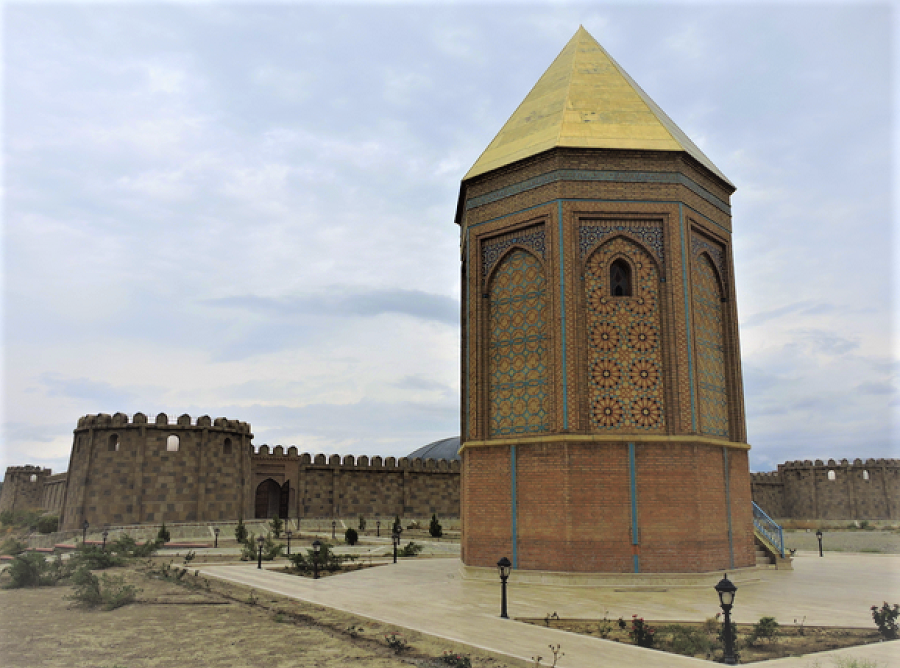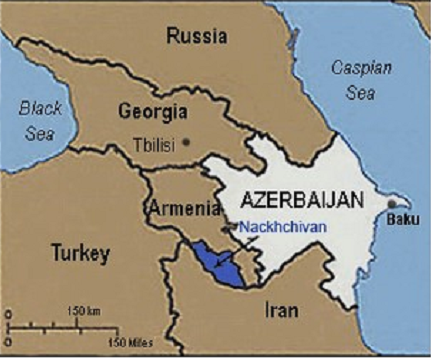Dr. Jack Wheeler
THE GREEK GODS OF SICILY
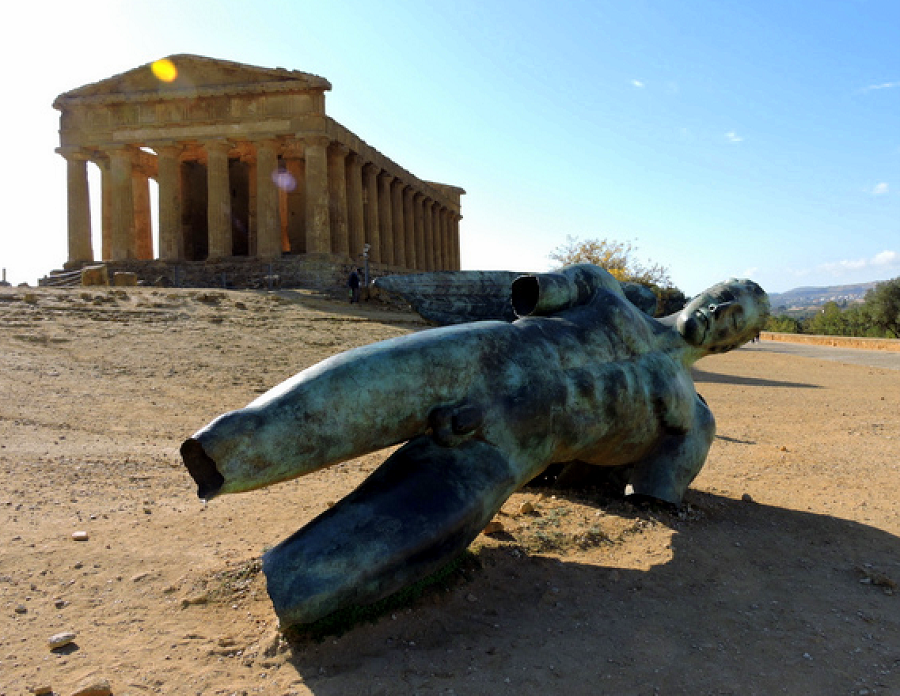 The Ancient Greeks began settling in the Mediterranean’s largest island around 750 BC. They called it Sikelia, after the Sikani and Sicel tribes that lived there. They flourished, building numerous cities, all with temples to their Olympian gods. The city of Akragas – now called Agrigento on the south coast – grew to a population of 200,000 by the 500s. It was here that the Greeks built the most outstanding examples of monumental Greek architecture that still exist today.
The Ancient Greeks began settling in the Mediterranean’s largest island around 750 BC. They called it Sikelia, after the Sikani and Sicel tribes that lived there. They flourished, building numerous cities, all with temples to their Olympian gods. The city of Akragas – now called Agrigento on the south coast – grew to a population of 200,000 by the 500s. It was here that the Greeks built the most outstanding examples of monumental Greek architecture that still exist today.
Along a ridge outside the city, they erected temples to Zeus, Hera, Heracles (Hercules) and many others. The one you see here the Romans called the Temple of Concordia (harmony), for by the time they showed up in the 200s, the Greek name was lost. In the foreground lies a remnant of a bronze statue to one of the Greek gods – perhaps Apollo. The glory that was Greece has been gone with winds of millennia. It can be a very emotional experience to be here.(Glimpses of Our Breathtaking World #248 photo ©Jack Wheeler)
SHOULDN’T THE PALESTINIANS BE TERRIFIED OF IRAN?
 [This Monday’s Archive was first published on December 8, 2005. In response to last week’s HFR (11/17), TTPer Brant asked on the Forum: “What is Israel’s future when one nuclear bomb could destroy the heart of the country in what would be the Jews second Holocaust? This is being morally set up by the general rise in anti-Semitism especially in the United States.” This essay of 18 years ago may help to provide an answer.]
[This Monday’s Archive was first published on December 8, 2005. In response to last week’s HFR (11/17), TTPer Brant asked on the Forum: “What is Israel’s future when one nuclear bomb could destroy the heart of the country in what would be the Jews second Holocaust? This is being morally set up by the general rise in anti-Semitism especially in the United States.” This essay of 18 years ago may help to provide an answer.]
TTP, December 8, 2005
With Mullah Iran seemingly on the verge of getting a nuke or two, it is a very good time to point out to Palestinians that there is no way to make a nuclear bomb that just kills Jews. There is no way to “wipe Israel off the map” in a Nuclear Armageddon without wiping out the Palestinians as well.
A nuclear fireball detonated over Jerusalem would kill a substantial fraction of the city’s half-million Jews – and the city’s quarter-million Palestinians. But not only lives would be destroyed. Next to the Kaaba in Mecca, the most sacred site to Sunni Moslems in the world is the Al Aqsa Mosque and the Dome of the Rock, which comprise the Haram esh-Sharif, the Noble Sanctuary on top of Temple Mount.
A nuke would turn the Noble Sanctuary into radioactive dust. This is what Iran’s terrorist leaders are threatening to do. So all you Palestinians, all you Moslems out there, wherever you are , get the picture: Wiping Israel off the map means wiping your sacred Noble Sanctuary[2] off the map as well. It’s an inescapable package deal. Still think Iran is on your side?
HALF-FULL REPORT 11/17/23
Outrage not over have vagrants were booted out by police, but that the filthy fecal mess SFO has become wasn’t cleaned up much sooner, that it never should been allowed to begin with, that it will quickly be allowed to return. The irony is that Gavin Newsom, the worst governor in America, may see this as his ticket to the White House.
Everyone by now knows that Dementia Joe will not be the Dem nominee in ’24. Including Joe, who at the APEC Summit SanFran was cleaned up for, said in praise of Newsom, “He’s been a helluva governor, matter of fact he can be anything he wants – he could have the job I’m lookin’ for.”
Right, let Gruesome do to all of America what he’s done to California.
FLASHBACK FRIDAY: HAJJAR QIM
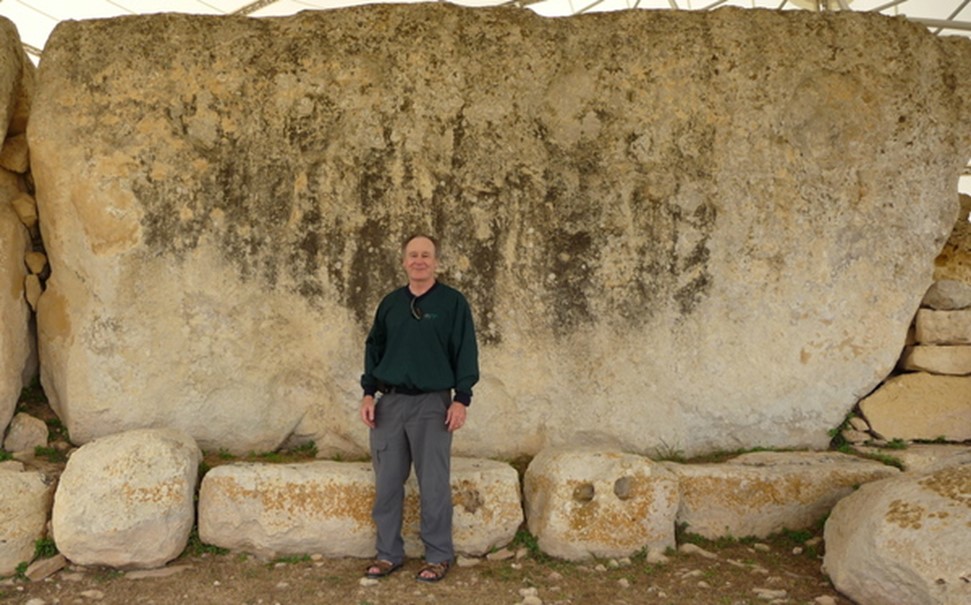 The megalithic temple of Hajjar Qim (hah-jar seem) on the island of Malta in the center of the Mediterranean, was built a thousand years before the pyramids in Egypt. The Stone Age people there made their temples of enormous stones weighing several tons cut from the limestone bedrock with tools of stone and antler horn for they had no metal, and moved them using small round-cut rocks as ball bearings for they had no wheels.
The megalithic temple of Hajjar Qim (hah-jar seem) on the island of Malta in the center of the Mediterranean, was built a thousand years before the pyramids in Egypt. The Stone Age people there made their temples of enormous stones weighing several tons cut from the limestone bedrock with tools of stone and antler horn for they had no metal, and moved them using small round-cut rocks as ball bearings for they had no wheels.
The massive stone I’m in front of weighs over 20 tons. These folks figured out all by themselves how to build these extraordinary temples to their gods and goddesses close to six thousand years ago. Nobody taught them. They were the first.
These ancient temples are only one of the so many things that entrance the visitor to Malta. Medieval walled cities, sea caves of day-glo blue water, sunset dining in fabulous restaurants with great food, great beer, and great wine, luxury hotels made from palaces or palazzos – all at reasonable cost.
90% of Maltese are devoutly Christian, having been so since converted by St. Paul himself in 60 AD. They are warm and welcoming, eager to have you join in the fun of their village festivals. I had such a wonderful time with them when I was first here in 2009 (when the photo you see was taken). I’ve been back twice now and can’t wait to be there again. So much so I’ll be leading an exploration of Malta over next Memorial Day (May 25-June 2). Let me know on the Forum if you’d like to join me. (Glimpses of Our Breathtaking World #241 photo ©Jack Wheeler)
SCANDERBEG
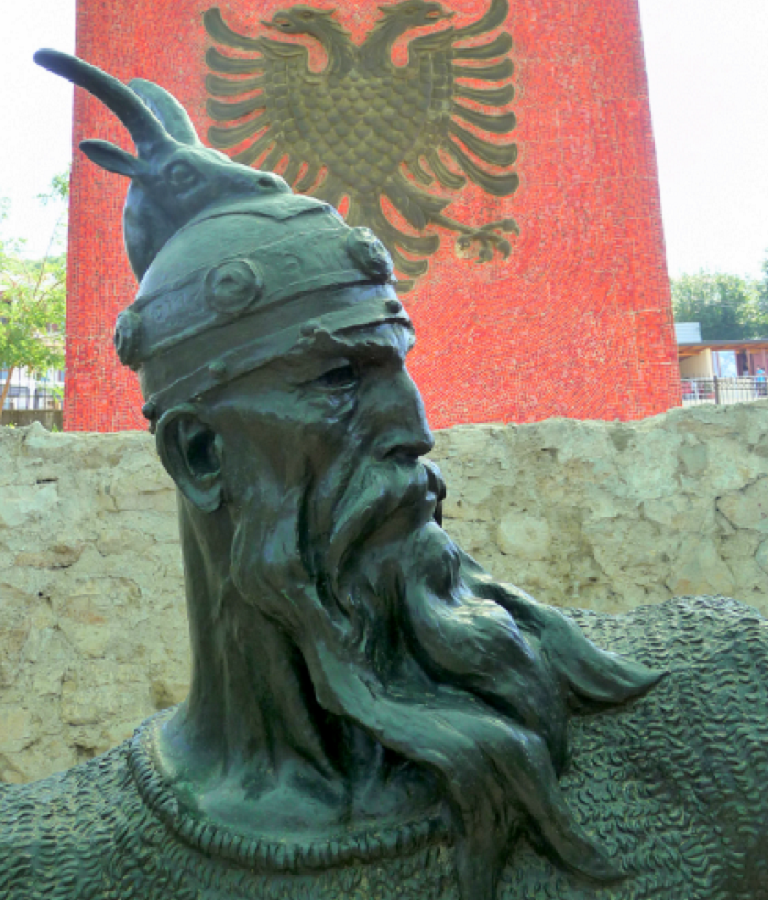 In the city of Lezhë overlooking the Adriatic Sea, there is a memorial to Albania’s national hero, Scanderbeg (1405-1468). Born Giorgi Kastrioti in this city of northern Albania, he earned the title of “Lord Alexander” – Scanderbeg in Albanian – for his military genius in leading his Christian army against the Moslem armies of the Ottoman Empire. For 25 years (1443-1468), his 10,000 Christian Knights consistently inflicted defeat after defeat upon always much larger Moslem forces.
In the city of Lezhë overlooking the Adriatic Sea, there is a memorial to Albania’s national hero, Scanderbeg (1405-1468). Born Giorgi Kastrioti in this city of northern Albania, he earned the title of “Lord Alexander” – Scanderbeg in Albanian – for his military genius in leading his Christian army against the Moslem armies of the Ottoman Empire. For 25 years (1443-1468), his 10,000 Christian Knights consistently inflicted defeat after defeat upon always much larger Moslem forces.
His victory in the Battle of Albulena in 1457, where he destroyed an Ottoman army of 70,000, killing 15,000 and taking 15,000 prisoners, so astounded all of Christendom that Pope Calixtus III appointed him Captain-General of the Holy See, and gave him the title of Athleta Christi, Champion of Christ.
By the 1500s with Scanderbeg but a memory, the Ottomans conquered Albania and Islamized it for almost 400 years. With the rise of Albanian nationalism in the late 19th century, Scanderbeg’s memory was revived. Today he is revered by Albanians who only ostensibly remain Islamic yet idolize a Christian King who devoted his life to defeating their country’s Moslem oppressors. (Glimpses of Our Breathtaking World #247 photo ©Jack Wheeler)
BIRTHPLACE OF A GODDESS
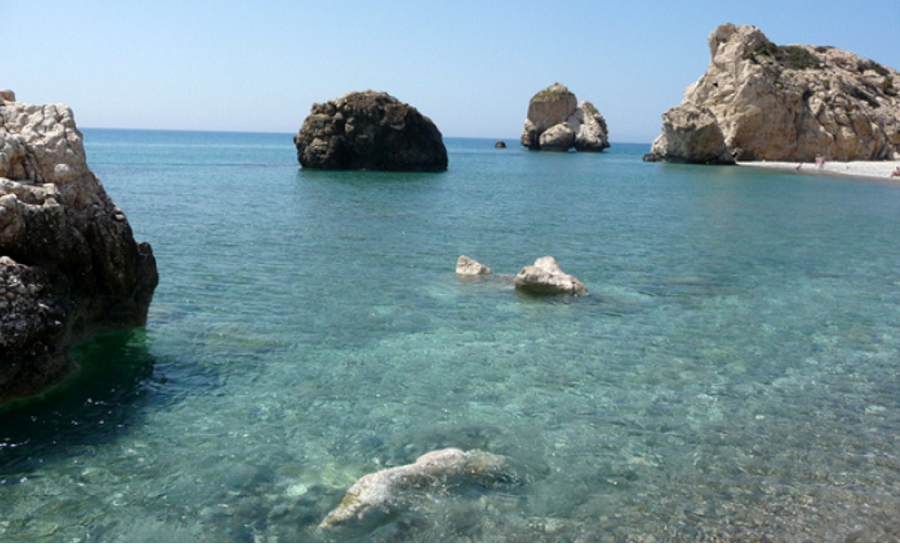 This is the Rock of Aphrodite – where Greek mythology says the Goddess of Love was born fully formed from the sea-foam surging around it – and makes Cyprus the Island of Love. It is south of Paphos on the island’s west coast.
This is the Rock of Aphrodite – where Greek mythology says the Goddess of Love was born fully formed from the sea-foam surging around it – and makes Cyprus the Island of Love. It is south of Paphos on the island’s west coast.
Adjacent is the Temple Sanctuary of Aphrodite, where pilgrims came from every Greek city and kingdom for 2,000 years to worship her. The ancient Greeks prayed to Aphrodite more than any of their other gods, for she was the apotheosis of love, desire, and fertility or having children. Which explains why today couples travel from all over the world to get married here.
Folks have been living in Cyprus for a really long time. So long that they were the first people in the world to domesticate cats over 9,000 years ago. A Neolithic village has been unearthed called Choirokoitia that’s surprisingly sophisticated for being 8,000 years old. In Roman times, after Jesus rose Lazarus from the dead, he went to Cyprus -- there is a beautiful church, the Agios Lazaros, built over his tomb.
The Painted Churches of Troodos are adorned with magnificent medieval art. The ruins of a Crusaders’ fortress inspired the fairy tale castle of Walt Disney’s Snow White. I hope Cyprus’ inspirational history will inspire you to explore it someday. (Glimpses of Our Breathtaking World #101 photo ©Jack Wheeler)
THE WORLD’S MOST UNUSUAL GRAVES
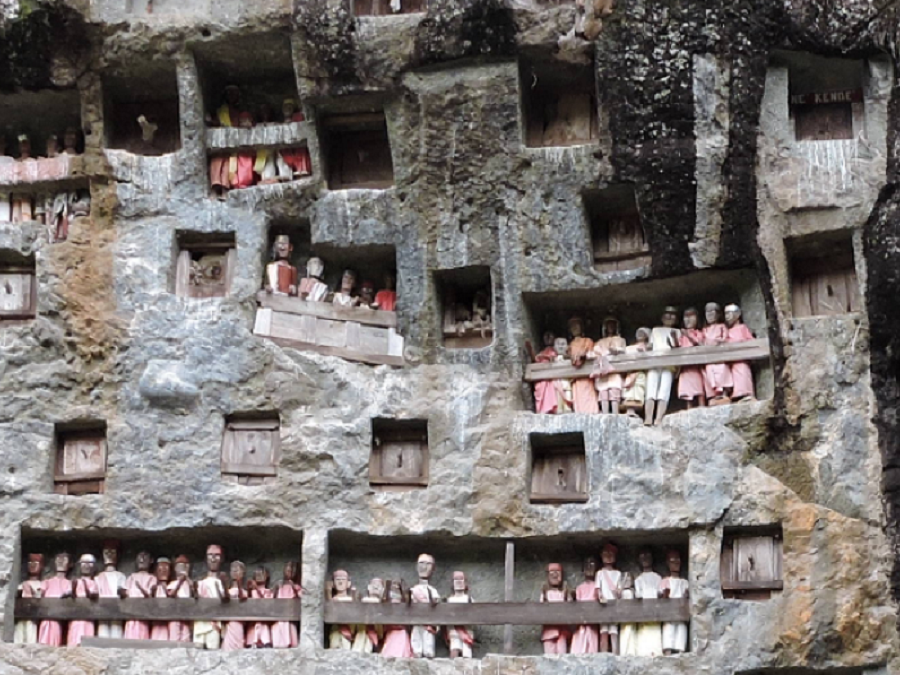 East of Borneo in Indonesia is a large starfish-shaped Island called Sulawesi, where in the south-central mountains the Toraja people have created one of the most exotic cultures on earth. They bury their dead in caves carved out of vertical cliffs, with balconies at the entrances lined with clothed wooden effigies called a Tau Tau as guardians for the departed.
East of Borneo in Indonesia is a large starfish-shaped Island called Sulawesi, where in the south-central mountains the Toraja people have created one of the most exotic cultures on earth. They bury their dead in caves carved out of vertical cliffs, with balconies at the entrances lined with clothed wooden effigies called a Tau Tau as guardians for the departed.
The Toraja live in villages composed of family long houses with enormous peaked roofs of wood and thatch, decorated with exquisite painted art and scores of buffalo horns. While Indonesia is predominantly Moslem, the Toraja are a blend of Christian-animist. They are a gentle, peaceful people, marvelously welcoming and friendly. It is a priceless privilege to spend time with them, as I was able to during the summer of 2016. (Glimpses of Our Breathtaking World #49 Photo ©Jack Wheeler)
A LOO WITH A VIEW
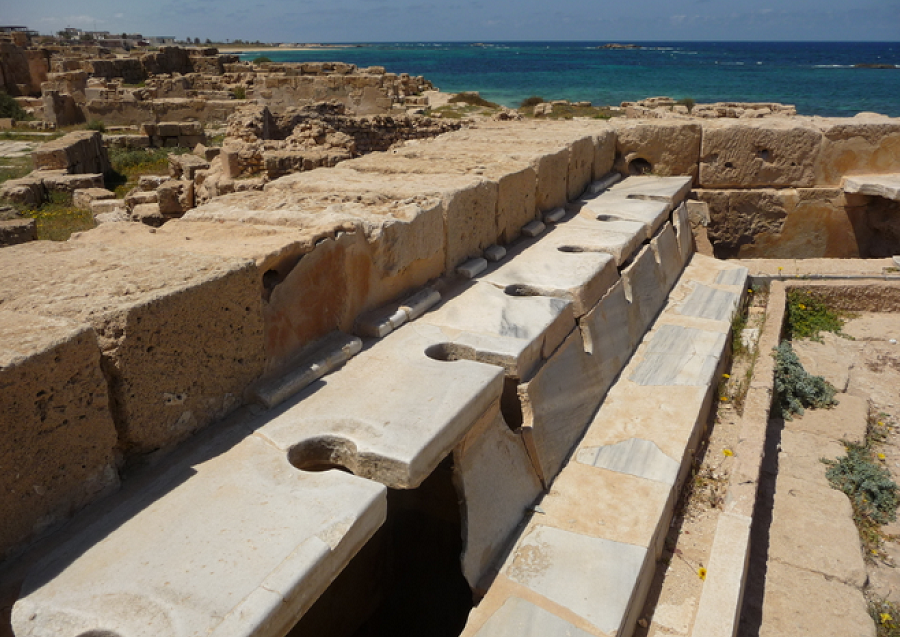 While exploring the Roman ruins of Sabratha on the Mediterranean coast of Libya in 2014, I came upon the men’s bathroom in the Gymnasium. “Now here’s a loo with a view!” I exclaimed, and noticed it was designed to have water flowing through the trough below the series of toilets.
While exploring the Roman ruins of Sabratha on the Mediterranean coast of Libya in 2014, I came upon the men’s bathroom in the Gymnasium. “Now here’s a loo with a view!” I exclaimed, and noticed it was designed to have water flowing through the trough below the series of toilets.
Founded as a trading post by the Phoenicians in the 6th century BC, it was settled and rebuilt by the Romans some 500 years later, flourishing for centuries as a main supplier of olive oil for the Empire. Monumental temples and theatres were constructed, along with sumptuous villas adorned with gorgeous mosaic floors. All of this has been excavated for the visitor to explore as a preserved UNESCO World Heritage Site.
It’s a shame Libya has collapsed into chaos now, for Sabratha and nearby Leptis Magna are among the most magnificent Roman ruins anywhere. One day the chaos will be over. (Glimpses of Our Breathtaking World #246 photo ©Jack Wheeler)
THE SELF-HATING DISHONESTY OF THE MEDIA
 [This month’s Archive was first published om May 9, 2012. Just like a leopard never changes its spots, the media never changes its self-hating dishonesty, transforming their self-loathing into a hatred for America.]
[This month’s Archive was first published om May 9, 2012. Just like a leopard never changes its spots, the media never changes its self-hating dishonesty, transforming their self-loathing into a hatred for America.]
TTP May 9, 2012
The most destructive, dishonest, and criminally hypocritical people in America today are not Democrat politicians, black race hustlers, Ivy League Marxist professors, or crony/shyster capitalists.
They are the publishers, editors, journalists, and commentators of the Liberal Media: Associated Press-New York Times-WaPo-ABC-NBC-CBS-CNN-MSNBC et al.
We’ll abbreviate Big Liberal Media to simply "BM" – appropriately enough for their product is the same as what those initials usually stand for.
One of the more astounding things about BM is that its slavish boot-licking of American Commiecrats is indistinguishable from that of Pravda’s or Izvestiya’s over Soviet rulers during the Cold War – yet with no gun at their heads nor threat of the Gulag. Why? Here’s the explanation.
FLASHBACK FRIDAY – THE MAN-EATER OF DALAT
 Dalat, South Viet Nam, 1961. I was 17 years old. A friend of my father’s, Herb Klein, came by our house. He was a prominent businessman whose passion was big-game hunting. He had just returned from the mountain jungle highlands of South Viet Nam and regaled us with stories of the Montagnard tribespeople who were plagued by tigers with a taste for human flesh. He told me that after climbing the Matterhorn, living with Amazon headhunters, and swimming the Hellespont, hunting a man-eating tiger should be my next adventure.
Dalat, South Viet Nam, 1961. I was 17 years old. A friend of my father’s, Herb Klein, came by our house. He was a prominent businessman whose passion was big-game hunting. He had just returned from the mountain jungle highlands of South Viet Nam and regaled us with stories of the Montagnard tribespeople who were plagued by tigers with a taste for human flesh. He told me that after climbing the Matterhorn, living with Amazon headhunters, and swimming the Hellespont, hunting a man-eating tiger should be my next adventure.
“You’d be saving so many lives, Jack,” he told me. “There’s one I heard about from the Co Ho Montagnards that’s killed and eaten almost 20 of them in the forests outside the town of Dalat. I know who can guide you, he was mine, his name is Ngo Van Chi.”
Somehow, I talked my parents into letting me do this. I had saved up the money from giving tennis and judo lessons. So there I was, in pitch dark in a “mirador” of branches and leaves, holding a .300 Weatherby with a flashlight wired to the barrel, waiting for this man-eating tiger to come for the rotting water buffalo we set out as bait. Chi and I heard the tiger, I put the rifle barrel out, Chi clicked on the flashlight, I saw these two enormous red eyes, and fired.
And there he is, the Man-Eater of Dalat, who would never kill another human being ever again. (Glimpses of Our Breathtaking World #175 photo ©Jack Wheeler)
HALF-FULL REPORT 11/10/23
The famous Grateful Dead song is apropos today, having just returned from ten full weeks of non-stop travel with my life partner Rebel, through all fives Stans of Central Asia – Kazakhstan, Kyrgyzstan, Uzbekistan, Tajikistan, Turkmenistan – racing to Lisbon for prostate cancer radiation therapy, all the way to Bali to meet and adore our new grandson Theo, sojourns to Christmas and Cocos-Keeling Islands in the Indian Ocean, then leading my 9th Himalaya Helicopter Expedition to all eight of the highest mountains in the Himalayas including Everest.
Got back home just in time to celebrate turning 80. Now that’s a long strange trip! Further, being 80 makes me reflect on what a long magically strange trip my entire life has been. I’m in such awe of it I can scarcely believe it happened but it really did.
And then with a heavy sigh, GD’s song makes me reflect also what a long nightmarishly strange trip America has been on, especially since it had the bottomless naïveté to elect a man who wanted God to damn America, simply because he had half-black skin – twice! – and the bottomless cowardice to allow his puppet to steal the presidency in broad daylight.
So now I’m home to patch my bones and gear up to keep on truckin’ – as America must do to save itself from its self-inflicted wounds before they become fully lethal. For as Miracle Max (Billy Crystal) explains in The Princess Bride, there is a very big difference between mostly dead and all dead:
THE PERITO MORENO GLACIER
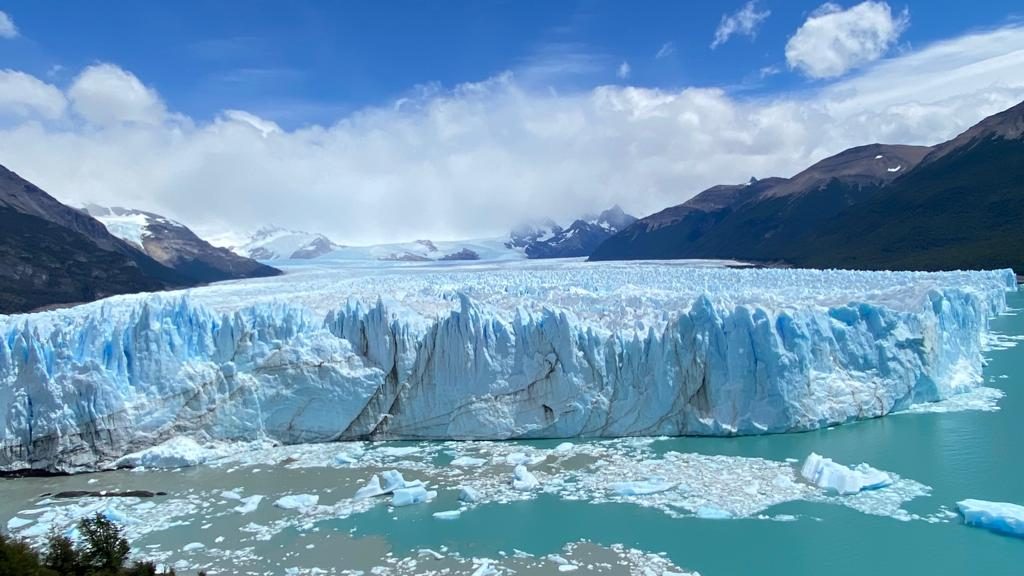 One of the most spectacular glaciers on earth, the Perito Moreno spills off the gigantic Southern Patagonia Ice Field constantly calving into Lago Argentino at the bottom of South America. It is almost 100 square miles of ice some 600 feet thick, and is an embarrassment to climate alarmists because it’s growing, not retreating. Every day, huge chunks of ice on the glacier’s front (which you see in the photo) break off or “calve” into the lake, equal to the glacier’s forward advance of two meters or over six feet a day.
One of the most spectacular glaciers on earth, the Perito Moreno spills off the gigantic Southern Patagonia Ice Field constantly calving into Lago Argentino at the bottom of South America. It is almost 100 square miles of ice some 600 feet thick, and is an embarrassment to climate alarmists because it’s growing, not retreating. Every day, huge chunks of ice on the glacier’s front (which you see in the photo) break off or “calve” into the lake, equal to the glacier’s forward advance of two meters or over six feet a day.
Thunderous cracks and booms accompany the plunge of the calved sections with huge splashes of water. You never know when or where they’ll occur along the mile wide front, but when they do, everyone watching exclaims and applauds. We were lucky to have perfectly gorgeous weather. You can take a boat along the front, view it from several boardwalks for marvelous vantage points, or even hike on it with crampons with an ice-trekking guide. Being here is one of Patagonia’s most thrilling experiences.
(Glimpses of Our Breathtaking World #253 photo ©Jack Wheeler)
THE LAND OF NOAH
We all know the story of Noah and the Ark told in Genesis (chapters 6-9). But do you know where Noah’s grave is? You’re looking at it. There is a tradition thousands of years old that he died and is buried here in the Land of Noah – Nakhchivan.
Known to the ancient Greeks and Romans as “Nakhsuana,” today Nakhchivan is an isolated enclave of Azerbaijan, cut off from the rest of the country by a strip of Armenia reaching Iran. You never heard of it because it’s unknown with a strange name – but the name literally means the Land of Noah. “Noah” is the Anglicization of Hebrew Noakh, or “Nakh” (“van” means “land,” “chi” means “of”).
Noah’s tomb has been built, destroyed, rebuilt, and destroyed again repeatedly over the millennia. It’s now been built yet again on the original site. Looming near is Haça Dag, the Notched Mountain – where Noah’s Ark they say ran aground as the Flood waters receded, carving a notch on the summit before coming to rest on Mount Ararat about 50 miles to the north (in present-day Turkey).
The people here are wonderfully friendly. I was always told “welcome” everywhere. I was even spontaneously invited to a wedding party in a remote village. You’ll find it easy to make friends here too. (Glimpses of Our Breathtaking World #3, photo ©Jack Wheeler)
THE DONGBA SPIRIT OF NATURE
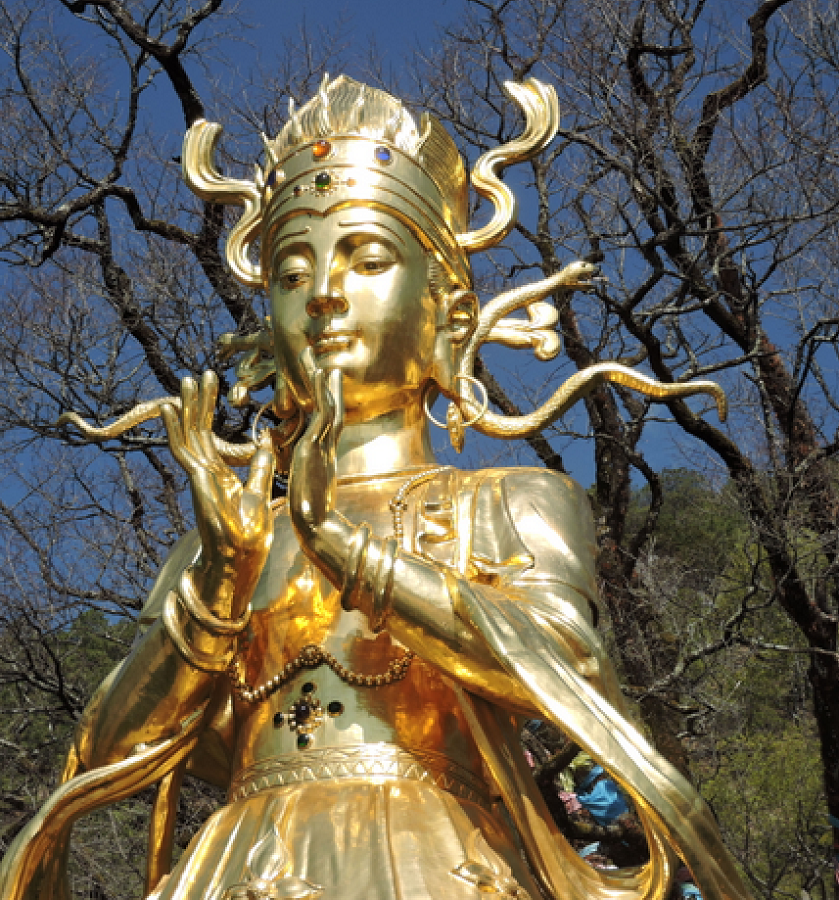 Originally nomads from the Tibetan Plateau, the Nashi people settled in the fertile Himalayan foothills of Yunnan over 2,000 years ago. From the ancient Tibetan religion of Bön, they developed a unique religion of nature-worship called Dongba. The progenitors of humanity and nature were two half-brothers, two mothers with the same father. Nature is controlled by a human-snake chimera called Shv – a statue of whom you see here.
Originally nomads from the Tibetan Plateau, the Nashi people settled in the fertile Himalayan foothills of Yunnan over 2,000 years ago. From the ancient Tibetan religion of Bön, they developed a unique religion of nature-worship called Dongba. The progenitors of humanity and nature were two half-brothers, two mothers with the same father. Nature is controlled by a human-snake chimera called Shv – a statue of whom you see here.
The Nashi are a peaceful gentle people whose ideal is living in accordance with nature. They dress very colorfully, women have equal respect with men, they write with the world’s only still-functioning pictographic script, and are proud of preserving their culture for millennia. It is an enchanting experience to be among them. (Glimpses of Our Breathtaking World #163 photo ©Jack Wheeler)
A KHAN, AN EMIR, A SULTAN!
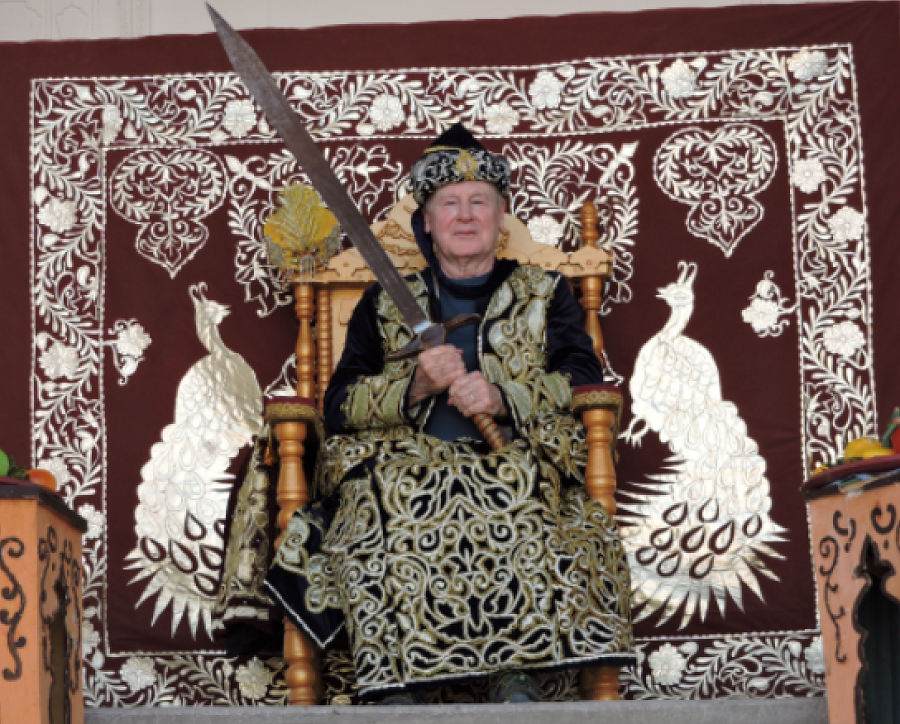 Is this the all-powerful potentate of a remote exotic Khanate, Emirate, or Sultanate hidden in the deep recesses of an unknown corner of Asia? Wielding his mighty sword ready to bestow a knighthood on those who please him or decapitate those who don’t?
Is this the all-powerful potentate of a remote exotic Khanate, Emirate, or Sultanate hidden in the deep recesses of an unknown corner of Asia? Wielding his mighty sword ready to bestow a knighthood on those who please him or decapitate those who don’t?
Could be – he looks ready to do either, doesn’t he?
Or is it me, dressed up as a Khan, an Emir, a conquering Sultan, just for fun? Your call.
Whatever you decide, this photo was taken in the fabulously exotic ancient Silk Road Oasis of Bukhara in the heart of Central Asia not long ago. And to have this same photo of yourself, come with me when I plan my next Central Asia expedition soon. You’ll have one of the great adventures of your life if you do. (Glimpses of Our Breathtaking World #184 photo ©Jack Wheeler)
ARABS AND AZTECS
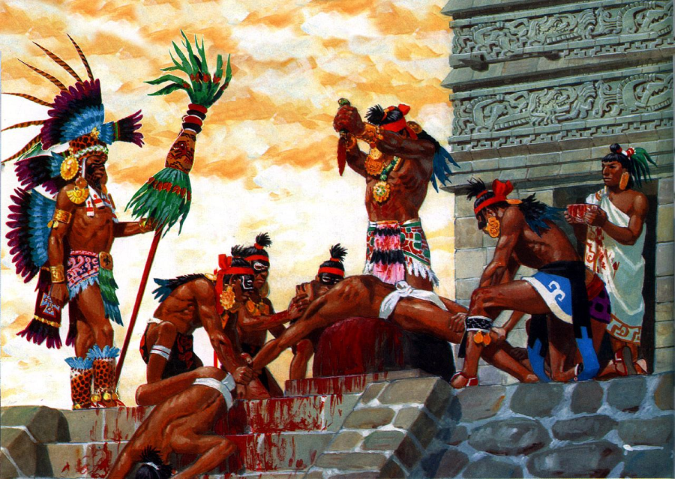 [This Monday’s Archive was originally published on April 29, 2004. Think of the current orgy of Jew-hatred calling for their mass slaughter on the streets of American and other Western cities by Arab Palestinians today as you read this.]
[This Monday’s Archive was originally published on April 29, 2004. Think of the current orgy of Jew-hatred calling for their mass slaughter on the streets of American and other Western cities by Arab Palestinians today as you read this.]
TTP. April 29, 2004
Cortez and his Spanish soldiers who conquered the Aztecs are known to history as “Conquistadors.” That label of “Conquerors” was applied to them by their contemporaries — but it originated a generation earlier. It was first used to describe the Spaniards who liberated their own country from Islam.
Arab invaders had swept across Spain in the early 700s, and it took centuries for the Spanish to kick them out. Cortez was not yet 10 years old when they were finally ejected from their last stronghold in Grenada in 1492. When Cortez first looked upon the pyramid temples of the Aztec gods, he called them mezquitas — mosques.
Cortez saw himself as a liberator — just as his fathers had liberated Spain from the Islamic yoke, so he would liberate “New Spain” from the Aztec yoke. Yet he had little idea of how deep were the political-religious parallels between the Arabs and the Aztecs.
FLASHBACK FRIDAY – QARI BABA
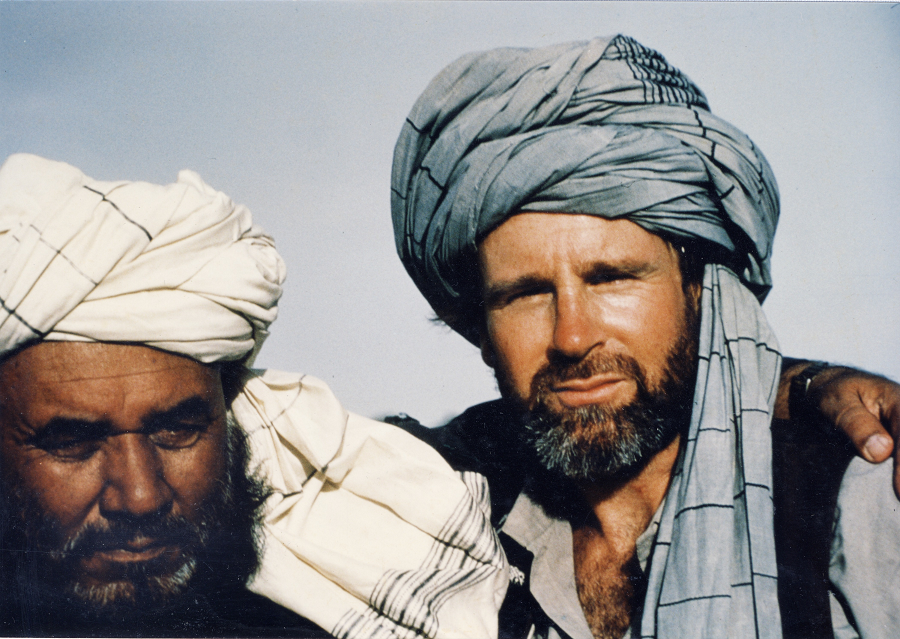 Afghanistan, 1984. Yes, that’s me with the legendary Qari Baba, Commander of the Harakat Mujahaddin waging a war of liberation against the Red Army of the Soviet Union – and my dear friend. I told him he looked like a combination of Genghiz Khan and Buddha, and he couldn’t stop laughing. We had so many extraordinary experiences together – like blowing up the Soviet High Command of Bala Hissar in Ghazni.
Afghanistan, 1984. Yes, that’s me with the legendary Qari Baba, Commander of the Harakat Mujahaddin waging a war of liberation against the Red Army of the Soviet Union – and my dear friend. I told him he looked like a combination of Genghiz Khan and Buddha, and he couldn’t stop laughing. We had so many extraordinary experiences together – like blowing up the Soviet High Command of Bala Hissar in Ghazni.
After the war was won with the final Soviet retreat in February, 1989, Qari Baba became the Governor of Ghazi Province. Then Pakistani Intelligence (ISI) created the Taliban to seize control of the country. Qari Baba had to take up arms anew against them. In March of 2006, he was assassinated by a Taliban hit team on orders from the ISI. I will never ever forget him. (Glimpses of Our Breathtaking World #111 photo ©Jack Wheeler)
THE BEAUTY OF BANGLADESH
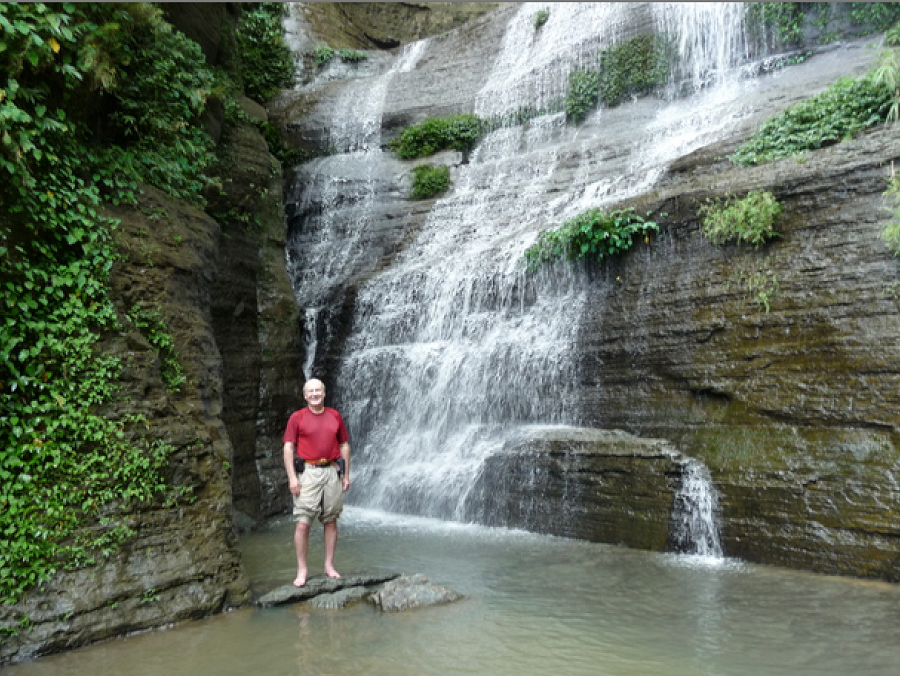 Most people consider Bangladesh a basket case country – all crowded overpopulated poverty constantly flooding etc. Yet I found it to be extraordinarily beautiful. The Shuvalong Falls here is just one example. It’s in the Chittagong Hills near the border with Burma. You’ll find Hindu shrines, massive mountain top Buddhist temples, small Moslem mosques, and a Christian church in almost every village
Most people consider Bangladesh a basket case country – all crowded overpopulated poverty constantly flooding etc. Yet I found it to be extraordinarily beautiful. The Shuvalong Falls here is just one example. It’s in the Chittagong Hills near the border with Burma. You’ll find Hindu shrines, massive mountain top Buddhist temples, small Moslem mosques, and a Christian church in almost every village
The charming main town of Rangamati is bustling with friendly energy. A boat ride on serene Kaptai Lake is soul-soothing. Everyone has a smile for you. It’s a place of captivating serendipity. A wonderful experience you might want for yourself. (Glimpses of Our Breathtaking World #154, photo ©Jack Wheeler)
GRANDMA AND GRANDPA NEED NOT FIGHT IN THE CAUCASUS
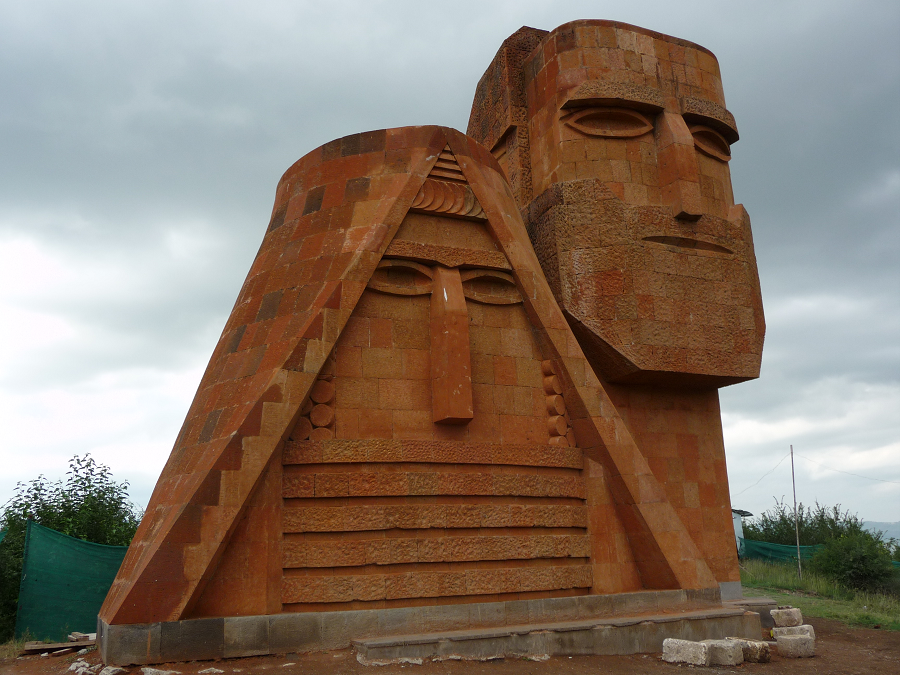 This is “Tatik-Papik” (Grandmother-Grandfather), a stone monument built in Soviet days as homage to the mountain people of the Transcaucasus Highlands of Armenia and Azerbaijan. After both became independent with the fall of the USSR, Armenia seized the Azeri part, known as Nagorno Karabagh. Since late September, war has broken out anew, with Turkey supporting the Azeris and Russia supporting the Armenians.
This is “Tatik-Papik” (Grandmother-Grandfather), a stone monument built in Soviet days as homage to the mountain people of the Transcaucasus Highlands of Armenia and Azerbaijan. After both became independent with the fall of the USSR, Armenia seized the Azeri part, known as Nagorno Karabagh. Since late September, war has broken out anew, with Turkey supporting the Azeris and Russia supporting the Armenians.
The dispute could be settled easily with a “land swap.” There is an exclave of Azerbaijan called Nakhchivan (see The Land of Noah, Glimpse #3) separated by a sparsely inhabited corridor of Armenia called the Mehgri Strip running to the border with Iran. It could be swapped for the Armenian-populated portion of Karabagh. Result: Azerbaijan and Nakhchivan are united and whole, Armenia and Armenian Karabagh are united and whole.
Should be win-win achievable given recent peace agreements achieved by our genius POTUS between Serbia and Kosovo, plus between Israel and the UAE, Bahrain, and Sudan don’t you think? (Glimpses of Our Breathtaking World #71 photo ©Jack Wheeler)
THE LIQUID RAINBOW – WORLD’S MOST BEAUTIFUL RIVER
 This is Caño Cristales, a river flowing through an ancient tableland in a remote roadless region deep in the forests of Colombia. Known as The Liquid Rainbow, geologists consider it the world’s most beautiful river.
This is Caño Cristales, a river flowing through an ancient tableland in a remote roadless region deep in the forests of Colombia. Known as The Liquid Rainbow, geologists consider it the world’s most beautiful river.
The colors are due to endemic riverweeds that grow only here, clinging to the rocks of the riverbed, and the crystal clarity of the water. It is not easy to get to – fly a light plane to an airstrip, take a boat upriver for miles, then walk a few miles more. But then you get to explore one of the most beautiful sights nature has to offer – replete with dozens of small fun waterfalls, surrounded by an uninhabited forest teeming with tropical birds.
No wonder National Geographic calls Caño Cristales “the River of the Garden of Eden.” Yet it is only one of the many extraordinary experiences in this huge country – for Colombia is larger than Texas and California combined. Wheeler Expeditions will be conducting an exploration of Hidden Colombia soon. Hope you can be with us. (Glimpses of Our Breathtaking World #22 photo ©Jack Wheeler)
MARX AND MOHAMMED
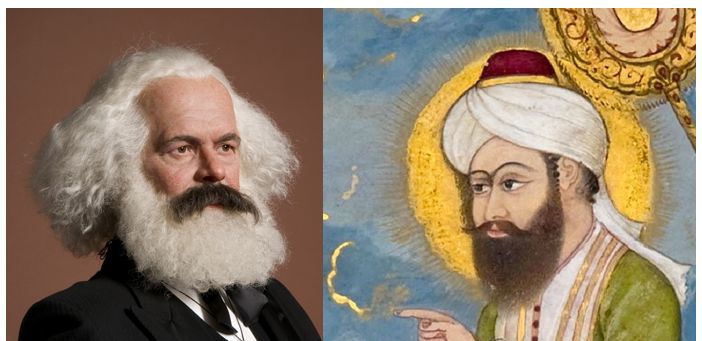 [This week’s Archive was first published on September 1, 2005. The current wave of genocidal fanaticism of Hamas and Mullah Iran, together with their Islamic and woke-left supporters in the US shows all too clearly the relevance of this analysis written 18 years ago. Today, however, the burden for being responsible for the death knell of Jihadism has shifted from Iraqis in 2005 to Palestinians.]
[This week’s Archive was first published on September 1, 2005. The current wave of genocidal fanaticism of Hamas and Mullah Iran, together with their Islamic and woke-left supporters in the US shows all too clearly the relevance of this analysis written 18 years ago. Today, however, the burden for being responsible for the death knell of Jihadism has shifted from Iraqis in 2005 to Palestinians.]
TTP, September 1, 2005
I was recently asked what might be the common ground between the Radical Left and Radical Islam. Let’s expand on that and discuss with you the extraordinary extent to which Marx and Mohammed are ideological brothers.
In fact, they are much more than that. Marx and Mohammed are metaphysical brothers. They share the same view on the nature of reality. Their fundamental bond is a denial of the Law of Non-Contradiction.
Far more than a rule of logic, this is a basic statement of the way reality works. Contradictions exist only between thoughts, not in the world. This is also known as “common sense.” Both Marx and Mohammed disagree.
Thus both Marx and Mohammed are advocates of apocalyptic totalitarianism.
TASMANIA’S MOUTH OF HELL
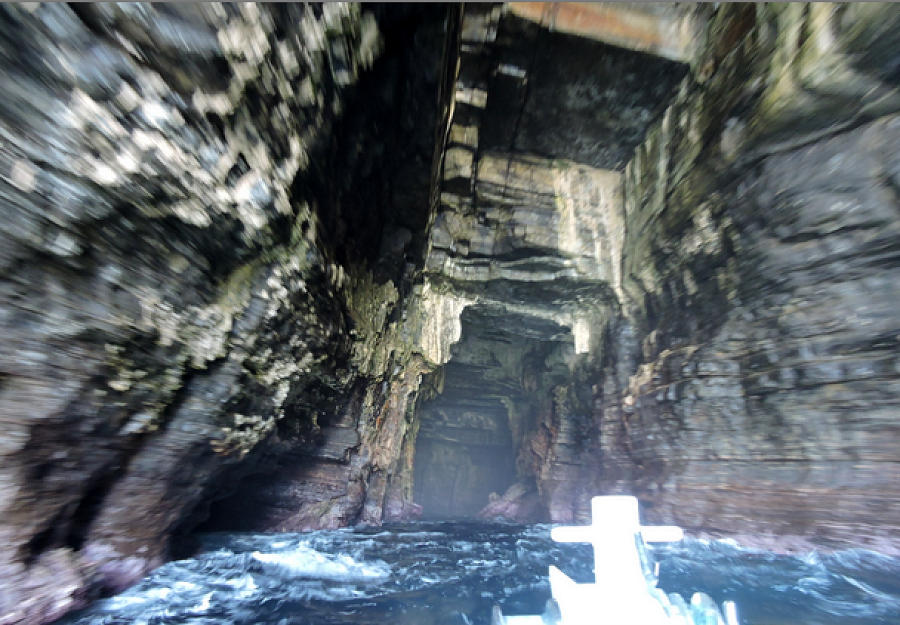 On the south coast of Australia’s island state of Tasmania, there is a huge sea cave the aboriginal Tasmanians called The Mouth of Hell for the shrieking and moaning the waves and wind made emitting from it. Boatsmen prefer to enter it to this day protected by a cross on their fishing boat’s bow.
On the south coast of Australia’s island state of Tasmania, there is a huge sea cave the aboriginal Tasmanians called The Mouth of Hell for the shrieking and moaning the waves and wind made emitting from it. Boatsmen prefer to enter it to this day protected by a cross on their fishing boat’s bow.
The wild beauty and mystery of Tasmania is absolutely extraordinary. At 35,000 square miles, it is the size of Maine with a population of less than half a million. Towns like Hobart and Launceston are charming, but the magic is in the uninhabited wilderness that makes up much of the island as a hiker’s paradise. That and a momentous coastline almost beyond belief.
If you’re ever in Oz, especially Melbourne, don’t miss the chance to explore Tasmania. (Glimpses of Our Breathtaking World #150 Photo ©Jack Wheeler)
FLASHBACK FRIDAY: AMAZON INITIATION
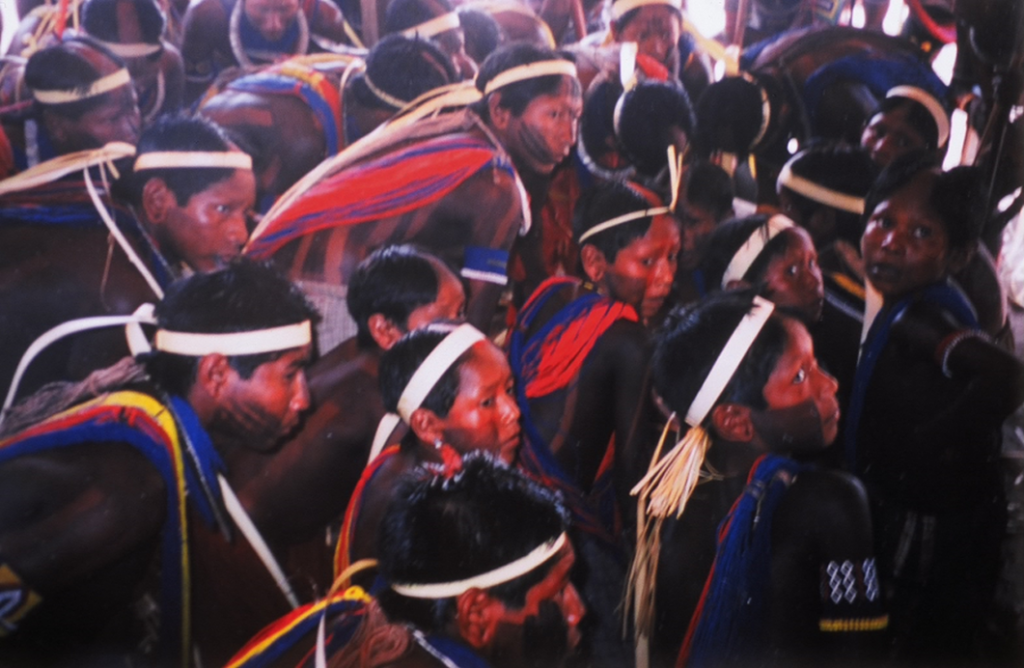 August, 2002. In the remotest Amazon jungle of Brazil, along a tributary of the Upper Xingu River, live the Xicrin-Kayapo people. They live traditionally as they have for centuries, isolated in their forests from the world. Here the young boys, painted and adorned, apprehensively await their initiation ceremonies into becoming young men. They are to be tested to show they have what it takes for the village to be proud of them.
August, 2002. In the remotest Amazon jungle of Brazil, along a tributary of the Upper Xingu River, live the Xicrin-Kayapo people. They live traditionally as they have for centuries, isolated in their forests from the world. Here the young boys, painted and adorned, apprehensively await their initiation ceremonies into becoming young men. They are to be tested to show they have what it takes for the village to be proud of them.
In some of their eyes, there is confidence. In others less so. This is an ancient Rite of Passage, an enthralling experience to witness. (Glimpses of Our Breathtaking World #229 photo ©Jack Wheeler)
TIJI — CASTING OUT THE DEMONS
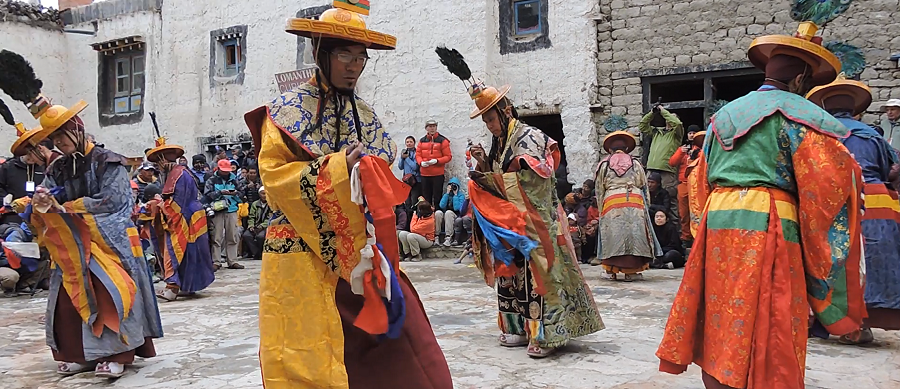 Once a year in the capital of the Tibetan Kingdom of Lo, the medieval walled city of Lo Manthang, the Lo-pa Tibetans hold a ceremony called Tiji (tee-gee), meaning casting out of demons. It’s meant to prevent any demons or malicious spirits from destroying their barley and buckwheat harvests.
Once a year in the capital of the Tibetan Kingdom of Lo, the medieval walled city of Lo Manthang, the Lo-pa Tibetans hold a ceremony called Tiji (tee-gee), meaning casting out of demons. It’s meant to prevent any demons or malicious spirits from destroying their barley and buckwheat harvests.
Tiji is colorfully spectacular and dramatic, but this is no tourist show – Tiji is a deeply serious religious ritual. The Kingdom of Lo is in a very remote and roadless region of the Himalayas known as Mustang, lying north of the Himalayan giants of Annapurna and Dhaulagiri in Nepal on the border with Chinese-occupied Tibet.
We were privileged to witness it on a Himalaya Helicopter Expedition. We hope to be so privileged again next year. (Glimpses of Our Breathtaking World #238 photo ©Jack Wheeler)
THE AMAZIGH
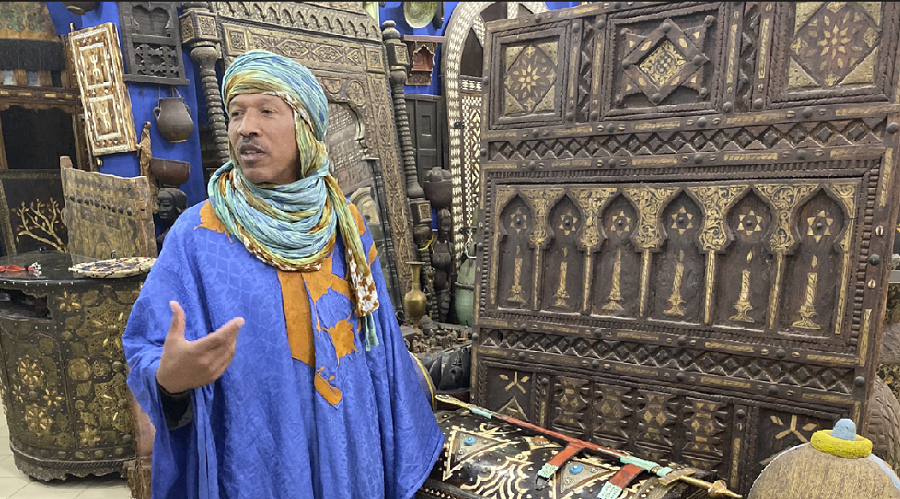 They call themselves Amazigh – meaning “the unconquered” – who are the original people of Morocco having lived there for over 12,000 years. You’ve heard of them as Berbers, a name they find offensive. Another people you’ve heard of are the Lapps, the reindeer-herders of far northern Scandinavia, who call themselves Saami.
They call themselves Amazigh – meaning “the unconquered” – who are the original people of Morocco having lived there for over 12,000 years. You’ve heard of them as Berbers, a name they find offensive. Another people you’ve heard of are the Lapps, the reindeer-herders of far northern Scandinavia, who call themselves Saami.
Astoundingly, they are directly related, for both are descended from the same stock of Cro-Magnon Ice Age hunters in Western Europe that split in two 15,000 years ago – one moving thousands of miles far north, the other thousands of mile south crossing the Gibraltar Strait to North Africa. Geneticists know this because the Amazigh and Saami share the same mitochondrial DNA haplogroup U5b1b. (See Saami and Berbers – An Unexpected Mitochondrial DNA Link, American Journal of Human Genetics, March 2005.)
So when you visit Morocco and meet a gentleman like that pictured above amidst a display of spectacular Amazigh artwork, you’ll know what incredible history resides within him. (Glimpses of Our Breathtaking World #242 photo ©Jack Wheeler)
THE POLISH SAVIOR OF WESTERN CIVILIZATION
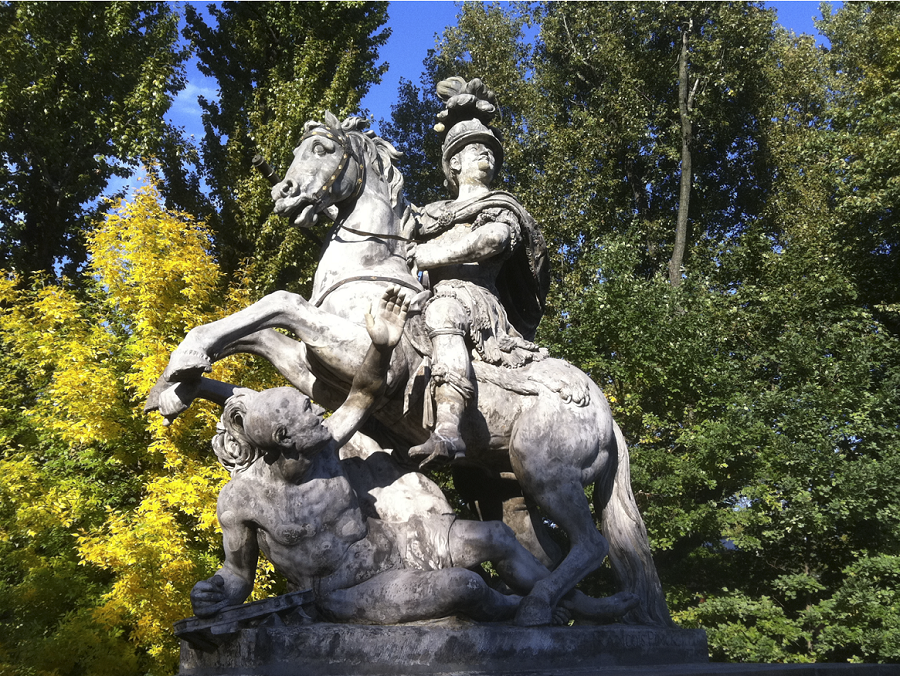 On September 12, 1683, Ottoman Sultan Mehmet IV as the Caliph of all Islam was on the verge of realizing the great Moslem dream of conquering all of Christian Europe for the glory of Allah. The great obstacle in his way – the city of Vienna – was about to be overwhelmed by the Sultan’s gigantic army of 140,000 Islamic Taliban of their day.
On September 12, 1683, Ottoman Sultan Mehmet IV as the Caliph of all Islam was on the verge of realizing the great Moslem dream of conquering all of Christian Europe for the glory of Allah. The great obstacle in his way – the city of Vienna – was about to be overwhelmed by the Sultan’s gigantic army of 140,000 Islamic Taliban of their day.
On the Kahlenberg hilltop above Vienna, the commander of the Christian forces, King Jan III Sobieski of Poland, gave the order to attack. Twenty thousand armed horsemen galloped down the slopes of Kahlenberg, the largest cavalry charge in history, with the Polish King and his Winged Hussars in the lead. The cavalry trampled the Ottomans and made straight for their camps.
Ottoman commander Kara Mustafa fled out of his tent and barely escaped with his life (it didn’t last long – the Sultan ordered him strangled). With the Christian victory at The Battle of Vienna, the Moslem threat to Europe was over. Sobieski wrote a letter to Pope Innocent XI, paraphrasing Julius Caesar:
“Venimus, Vidimus, Deus vincit” – “We came, We saw, God conquered.”
In turn, the Pope hailed Sobieski as “The Savior of Western Christendom.” Indeed he was, and still is so revered by the Polish people to this day – with no apology.
For the people of Poland stand out among those of all Europe for their pride in being part of Western Civilization – symbolized for them by this statue of their Hero King trampling the Ottomans in the beautiful Royal Baths Park in Warsaw. They will make sure visitors to the statue note that underneath the right forearm of the fallen Turkish soldier is a book – the Koran.
You owe it to yourself to visit Poland and meet the Polish champions of Christian liberty, having freed themselves from the Ottomans, the Russians, and the Soviets. We need more like them today. (Glimpses of Our Breathtaking World #159 Photo ©Jack Wheeler)
THE PERSIAN RATCHET
[This Monday’s Archive was originally published on August 18, 2005. This “nutshell history” of Persia is obviously relevant to the current war against Israel being sponsored by Mullah Iran. The links to the secessionist movements in Iranian Kurdistan and Iranian Azerbaijan are still good for these movements are active and growing.]
TTP, August 18, 2005
The war between Persia and the West is very ancient, well over a thousand years older than the war between Islam and Christianity.
Western Civilization originated in a strip of land 90 miles long and 30 miles wide along the Mediterranean coast of Asia Minor (Turkey today) known as Ionia. The Greeks who settled there in the 9th and 8th centuries BC colonized such cities as Ephesus and Miletus, where the first philosophers in history (like Thales, 635-543 BC) offered natural explanations of the world rather than superstition and myth.
The founder of the Persian Empire, Cyrus the Great incorporated Ionia within his rule but gave it autonomy. This freedom vanished under the tyranny of Darius I (550-486 BC), Ionia revolted in 502, Darius crushed the revolt, then invaded and attempted to conquer all of Greece.
On September 21, 490 BC, on the beach at Marathon, under the command of the Athenian general Miltiades, the Greeks destroyed Darius’ army, with 6,400 Persians killed versus 192 Greek hoplites.
THE TOMB OF THE FRAGRANT CONCUBINE
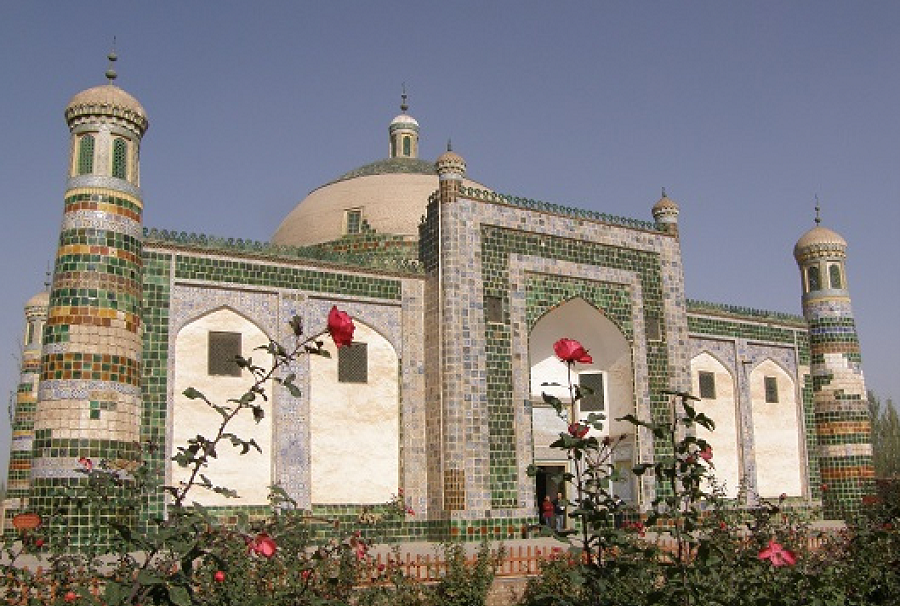 Princess Iparhan, granddaughter of the ruler of the Silk Road oasis of Kashgar, was so famous for her beauty and the intoxicating natural aroma of her body that the Manchu Emperor far to the east called for her. She was 22, the year was 1756. The Emperor became completely infatuated with her, making Iparhan his Imperial Noble Consort, loving her deeply until her death 33 years later in 1789.
Princess Iparhan, granddaughter of the ruler of the Silk Road oasis of Kashgar, was so famous for her beauty and the intoxicating natural aroma of her body that the Manchu Emperor far to the east called for her. She was 22, the year was 1756. The Emperor became completely infatuated with her, making Iparhan his Imperial Noble Consort, loving her deeply until her death 33 years later in 1789.
In mourning, the Emperor kept his promise to her that her body would be returned to Kashgar and buried in the mausoleum of Apak Hoja, built in 1640 by her Apaki family. And there she rests today. Everyone in Kashgar and beyond, however, knows the mausoleum as The Tomb of the Fragrant Concubine.
It’s a wonderfully romantic legend, and even though there are several conflicting versions, let’s hope this one is true. Regardless, a visit to this peaceful shrine is certainly memorable. (Glimpses of Our Breathtaking World #54 Photo ©Jack Wheeler)
HALF-FULL REPORT 10/20/23
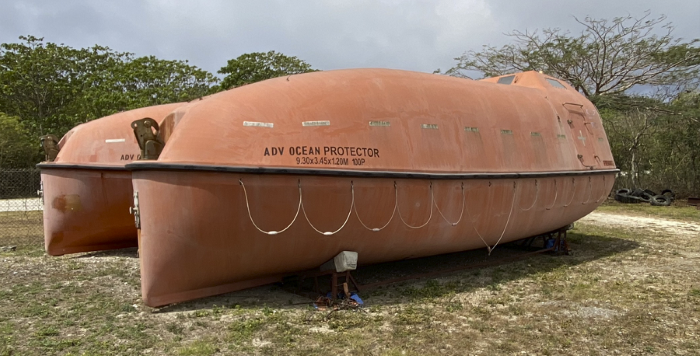 Christmas Island, Indian Ocean, Australia. Now what might these be. “Ocean Protector” they are labeled. Protector from what? Settle in your most comfortable chair and get ready for an amazingly cool story from this tiny remote island that has 100% relevance to what’s happening to our country right now.
Christmas Island, Indian Ocean, Australia. Now what might these be. “Ocean Protector” they are labeled. Protector from what? Settle in your most comfortable chair and get ready for an amazingly cool story from this tiny remote island that has 100% relevance to what’s happening to our country right now.
There’s a series of exceptional events occurring in various places around the world this week, the clown show in Washington continues, and you won’t believe who gave the best speech he’s ever made. Jump right on in, the water’s fine.
Just watch out for the Lionfish I spotted – those pretty spines have strong poison in them!
FLASHBACK FRIDAY: WHAT DO YOU SEE HERE?
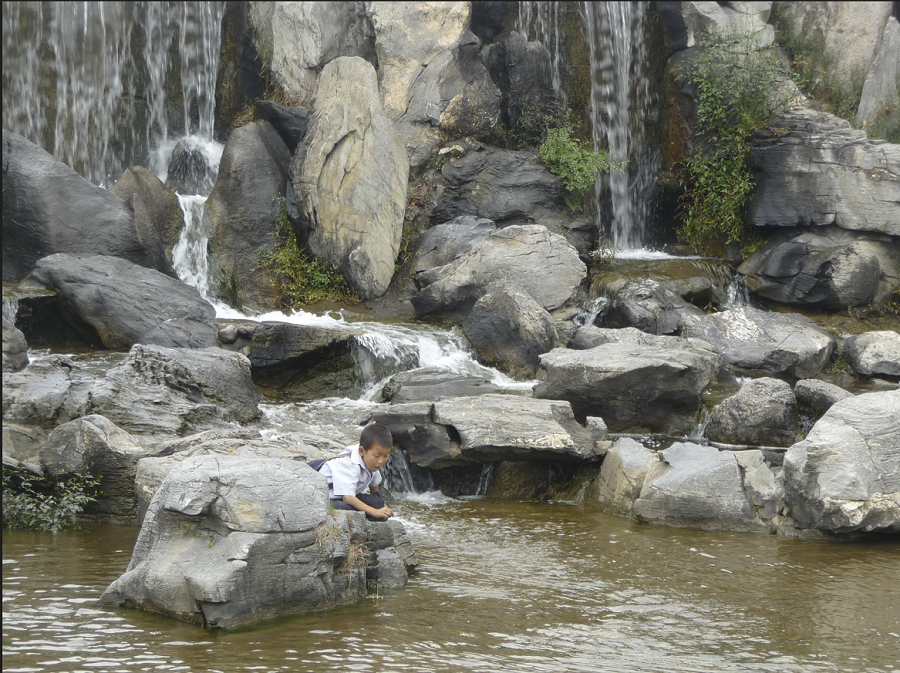 A young boy playing among rocks on a stream, yes. But where? I took this photo in a nature park in Pyongyang, North Korea.
A young boy playing among rocks on a stream, yes. But where? I took this photo in a nature park in Pyongyang, North Korea.
Gives you a different perspective, doesn’t it? This young North Korean boy, how so innocently playing amidst beautiful streams and waterfalls, has no future except to grow up to be a human robot in subjection to a tyranny. He has no idea of the fate in store for him. That’s why, for me, this is one of the saddest pictures I have even taken.
Perhaps he will escape from his political prison, but the odds are gravely against him. Life does have its somber moments. (Glimpses of Our Breathtaking World #244 photo ©Jack Wheeler)
BUZKASHI
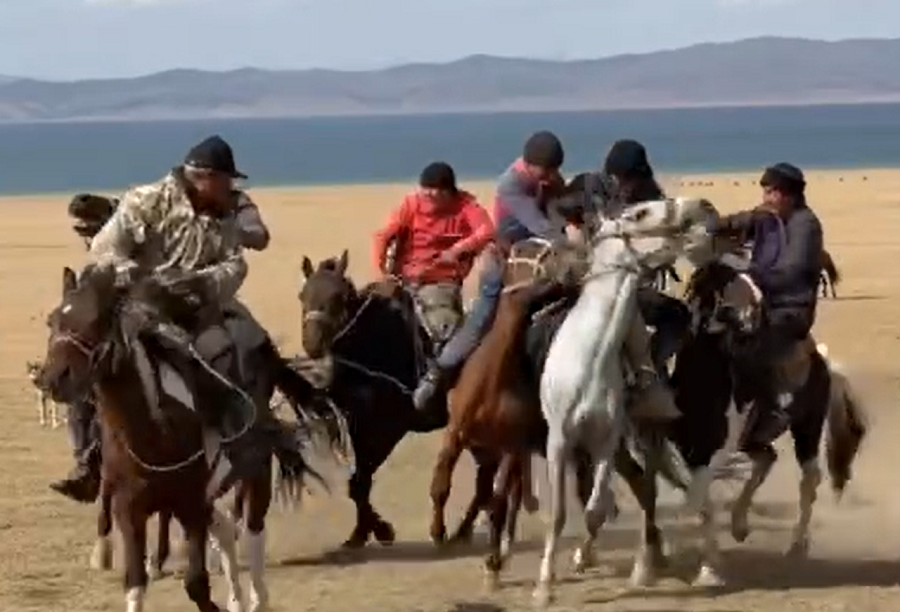 Song Kul. Kyrgyzstan. Here, 10,000 feet high along the shores of Lake Song Kul, Kyrgyz nomads play buzkashi, where men on horseback fight with whips, fists, elbows over a goat carcass (simulated for us in a heavy canvas bag) weighing some 40 pounds. There are no rules. Whoever gets the carcass to the goal line and drops it into the circle there, scores. This ancient game has been played for thousands of years by the nomads of Mongolia, Afghanistan, and Central Asia. The nomads who encamp at Song Kul are playing fiercely but actually having a lot of fun – laughter abounds. After the game, we had a cup of kumiss, slightly alcoholic fermented mare’s milk, with them. An experience never to be forgotten. (Glimpses of Our Breathtaking World #281 photo ©Jack Wheeler)
Song Kul. Kyrgyzstan. Here, 10,000 feet high along the shores of Lake Song Kul, Kyrgyz nomads play buzkashi, where men on horseback fight with whips, fists, elbows over a goat carcass (simulated for us in a heavy canvas bag) weighing some 40 pounds. There are no rules. Whoever gets the carcass to the goal line and drops it into the circle there, scores. This ancient game has been played for thousands of years by the nomads of Mongolia, Afghanistan, and Central Asia. The nomads who encamp at Song Kul are playing fiercely but actually having a lot of fun – laughter abounds. After the game, we had a cup of kumiss, slightly alcoholic fermented mare’s milk, with them. An experience never to be forgotten. (Glimpses of Our Breathtaking World #281 photo ©Jack Wheeler)
THE MOST ANCIENT SYMBOL OF REVERENCE FOR EXISTENCE
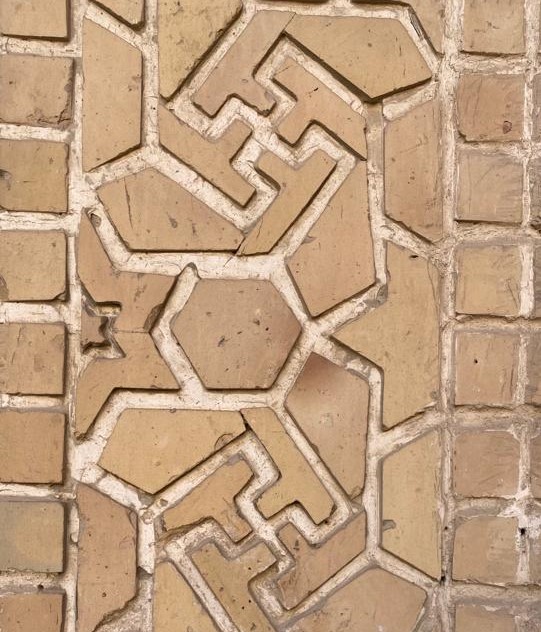 Yesterday, I found this religious decoration on the outer wall of an old mosque in the three-thousand year-old Silk Road oasis city of Bukhara. I’ve seen it in many places throughout the world, such as ancient ruins of India and Rome. Yet this is far older – it was carved onto mammoth ivory by Ice Age hunters in Ukraine 12,000 years ago.
Yesterday, I found this religious decoration on the outer wall of an old mosque in the three-thousand year-old Silk Road oasis city of Bukhara. I’ve seen it in many places throughout the world, such as ancient ruins of India and Rome. Yet this is far older – it was carved onto mammoth ivory by Ice Age hunters in Ukraine 12,000 years ago.
From time immemorial has it represented eternity, prosperity, the centeredness of all that is. Why? Look up into the sky on a clear dark night. All people have studied the heavens for eons. You could always know where you were by finding North, for the two front stars of what we call the Big Dipper point to it – always.
The Greeks called it Mega Arktikos, the Great Bear – why we call Far North the Arctic today. The ancients saw the Bear every year rotating around Celestial North – now occupied by Polaris, the North Star – through all four seasons, while all the stars in the sky circled around it every night. What do you see in this depiction of that seasonal rotation?
 Yes, a Swastika -- Sanskrit for “the goodness of existence.” The most heinous perversion of symbolic art in world history was to take the symbol for the goodness of existence used by people for a dozen millennia – and still revered by Buddhists, Hindus, Moslems and many others to this day – and twist it into a symbol of horrific evil. It’s an informative lesson of history. (Glimpses of Our Breathtaking World #225 photo ©Jack Wheeler)
Yes, a Swastika -- Sanskrit for “the goodness of existence.” The most heinous perversion of symbolic art in world history was to take the symbol for the goodness of existence used by people for a dozen millennia – and still revered by Buddhists, Hindus, Moslems and many others to this day – and twist it into a symbol of horrific evil. It’s an informative lesson of history. (Glimpses of Our Breathtaking World #225 photo ©Jack Wheeler)
NASR OL-MOLK
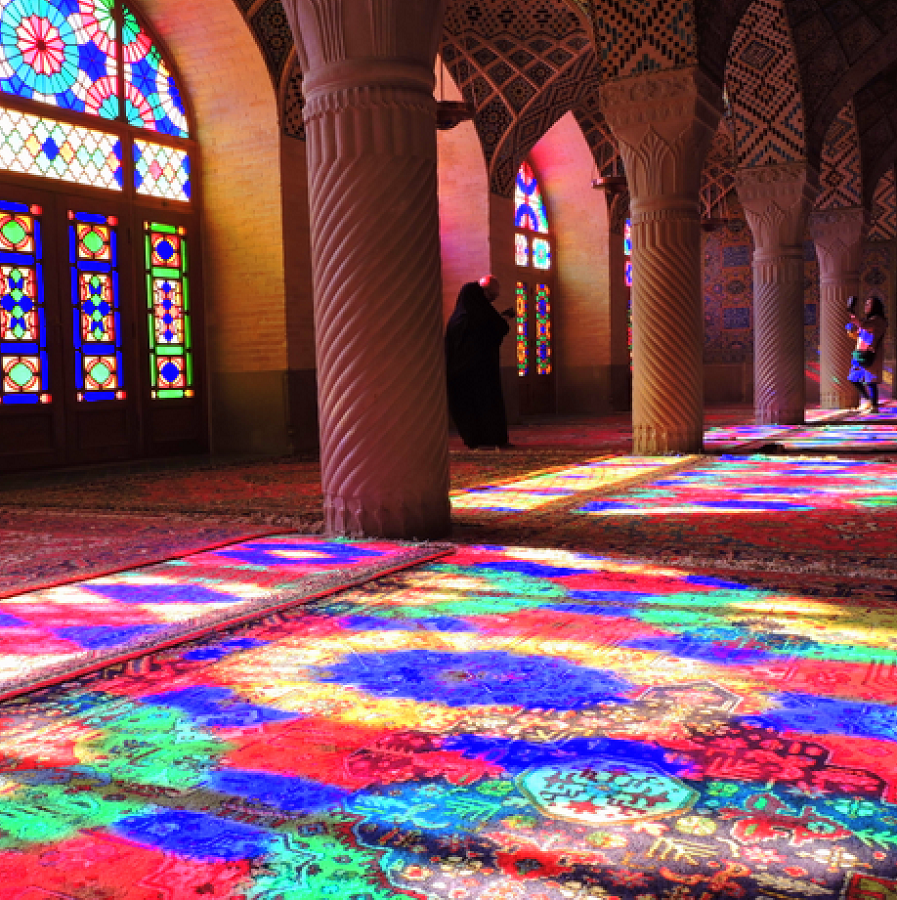 What many consider the world’s most beautiful mosque is in Persia’s most captivating city, Shiraz. Over four millennia older than Islam, over two millennia older than Persia, Shiraz was "Shirrazish," a city of ancient Elam at the birth of civilization in Mesopotamia 5,000 years ago. Even then, Shiraz was famous for wine. A thousand years ago, it was considered the best in the world. Marco Polo praised it. No more. Prior to the Islamic Revolution in 1979, there were over 300 Persian wineries. Now there are none.
What many consider the world’s most beautiful mosque is in Persia’s most captivating city, Shiraz. Over four millennia older than Islam, over two millennia older than Persia, Shiraz was "Shirrazish," a city of ancient Elam at the birth of civilization in Mesopotamia 5,000 years ago. Even then, Shiraz was famous for wine. A thousand years ago, it was considered the best in the world. Marco Polo praised it. No more. Prior to the Islamic Revolution in 1979, there were over 300 Persian wineries. Now there are none.
Shiraz is still a city of gardens and flowers. At the garden tomb of Persia’s most revered poet Hafez (1315-1390), young couples gather for discrete romance as they have for centuries. The beauty of Nasr ol-Molk – with the sun shining through its stained glass windows covering the floor carpets in color, and the interior a dazzling display of pink tile ornamentation – can be overwhelming. The same for the friendliness of the people – always welcoming with a smile for you.
Especially if you are American. All the people we met love America and despise their rulers. The Land of Persia is still here in today’s Iran, and someday it will be free, America’s ally again. The wine will flow here once more. (Glimpses of Our Breathtaking World #83 photo ©Jack Wheeler)
WEST OF THE DEAD SEA
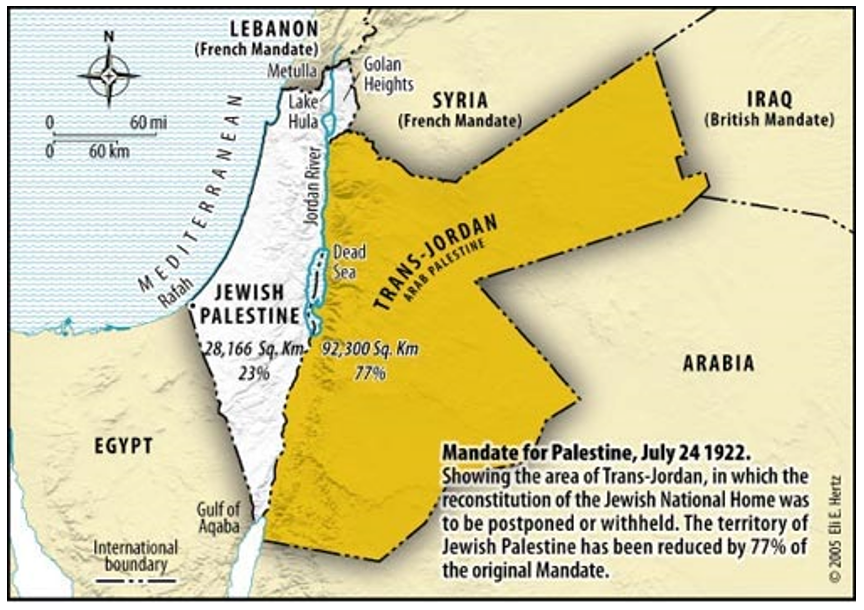 [This week’s Archive was originally published on July 11, 2008. In response to last Friday’s HFR (HFR 10/13/23), TTPer Michael made this request: “Jack - Too many young people believe Israel was stolen from the Palestinians. You wrote an excellent article on the founding of Israel a few years back I wish you would republish with permission to share. It should have an opportunity to go viral as a counterbalance to the lies which have infected the narrative on the Israeli/Palestinian conflict.” Here it is, Michael. Note that it contains links to five previous TTP articles for background in greater depth. I’m looking forward to your and other TTPer comments in the Forum.]
[This week’s Archive was originally published on July 11, 2008. In response to last Friday’s HFR (HFR 10/13/23), TTPer Michael made this request: “Jack - Too many young people believe Israel was stolen from the Palestinians. You wrote an excellent article on the founding of Israel a few years back I wish you would republish with permission to share. It should have an opportunity to go viral as a counterbalance to the lies which have infected the narrative on the Israeli/Palestinian conflict.” Here it is, Michael. Note that it contains links to five previous TTP articles for background in greater depth. I’m looking forward to your and other TTPer comments in the Forum.]
TTP, July 11, 2008
All photos by Jack Wheeler
You're lazily swimming in the Mediterranean Sea just off a beautiful beach. The beach goes on for miles, lined with resort hotels, and it's crowded with people. Young fit men playing volleyball, beautiful bikini-clad young women sunbathing, families relaxing under umbrellas, children making sand castles, multitudes of folks peacefully enjoying themselves in the sun, the sand, and the gentle sea.
You swear you're at one of Spain's great beaches, like Valencia, Marbella, or Barcelona. But you've noticed that a small light plane has flown along the shoreline several times. Your son asks, "Dad, why does that plane keep flying by?"
"It's an IDF spotter plane," you tell him. "Watching for a boatload full of Arab terrorists who might land to machine gun to death as many Jews on this beach as they can. Stuff like that can happen here anyplace, anytime. That's life in Israel."
Nope, we're not in Valencia. We're in Tel Aviv.
STRANGLER FIG
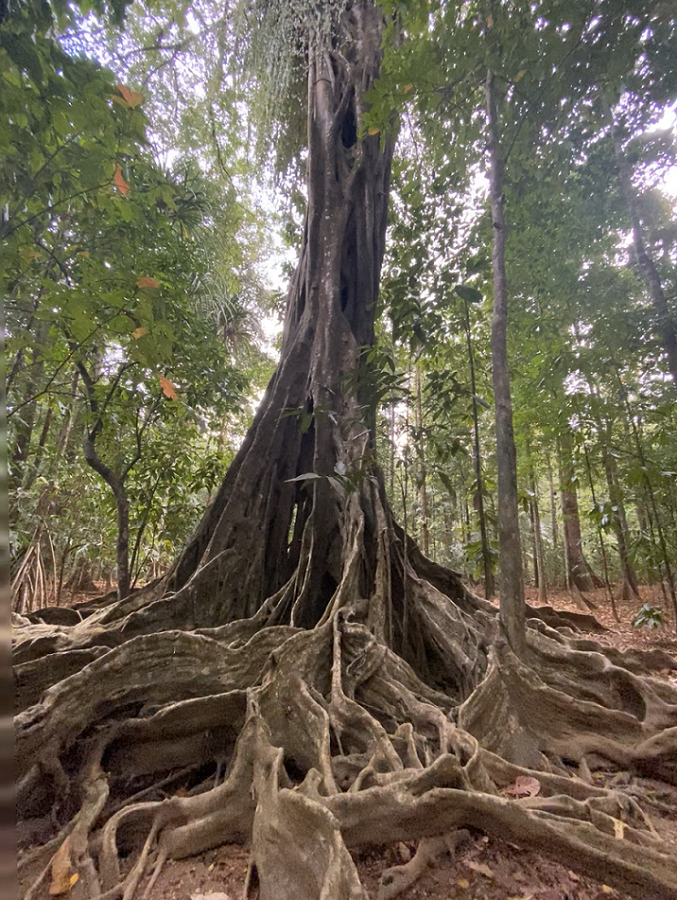 Christmas Island, Indian Ocean, Australia. This huge banyan tree no longer exists. It’s been slowly strangled to death for up to a century. Seeds of fig vines were deposited by bird droppings in the upper branches of the tree, which sprouted and began to grow downward along the tree trunk, sucking nutrients from the tree along the way. Slowly year after year, they coil and wrap around the entire trunk to the ground, literally strangling the tree out of existence until all that’s left are the huge enveloping fig vines. It’s hollow inside – look carefully above the ground roots and you’ll see a shaft of vertical light.
Christmas Island, Indian Ocean, Australia. This huge banyan tree no longer exists. It’s been slowly strangled to death for up to a century. Seeds of fig vines were deposited by bird droppings in the upper branches of the tree, which sprouted and began to grow downward along the tree trunk, sucking nutrients from the tree along the way. Slowly year after year, they coil and wrap around the entire trunk to the ground, literally strangling the tree out of existence until all that’s left are the huge enveloping fig vines. It’s hollow inside – look carefully above the ground roots and you’ll see a shaft of vertical light.
I’ve seen a good many Strangler Figs in the rain forests of Central Africa and the Amazon – but the ones here on Christmas Island in the Indian Ocean are the most spectacular. (Glimpses of Our Breathtaking World #280 photo ©Jack Wheeler)
FLASHBACK FRIDAY: THE LOST CITY OF KUELAP
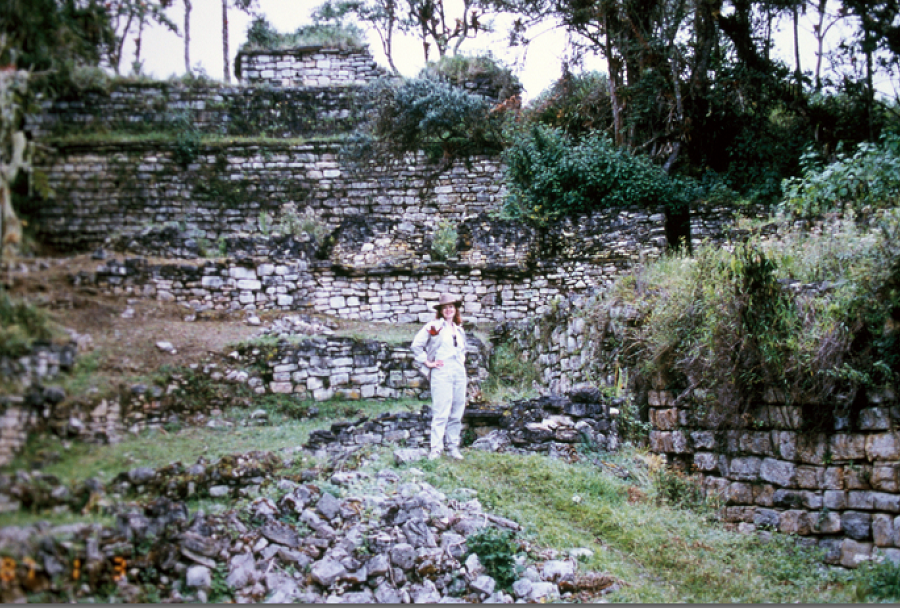 10,000 feet high in the Amazon cloud forests of northern Peru is a mysterious lost city built by an unknown people many centuries before the Incas existed. Known as Kuelap by villagers in the lowlands below, the Incas called the people who built it Chachapoyas, “Cloud Warriors.” I led an expedition here in 1994, climbing high up into the Amazon Andes to come upon gigantic stone walls 60 feet high surrounding hundreds of stone structures. Here you see Rebel among them. We’ll be here again in a year or two in another exploration of Peru. (Glimpses of Our Breathtaking World #153, photo ©Jack Wheeler)
10,000 feet high in the Amazon cloud forests of northern Peru is a mysterious lost city built by an unknown people many centuries before the Incas existed. Known as Kuelap by villagers in the lowlands below, the Incas called the people who built it Chachapoyas, “Cloud Warriors.” I led an expedition here in 1994, climbing high up into the Amazon Andes to come upon gigantic stone walls 60 feet high surrounding hundreds of stone structures. Here you see Rebel among them. We’ll be here again in a year or two in another exploration of Peru. (Glimpses of Our Breathtaking World #153, photo ©Jack Wheeler)
HALF-FULL REPORT 10/13/23
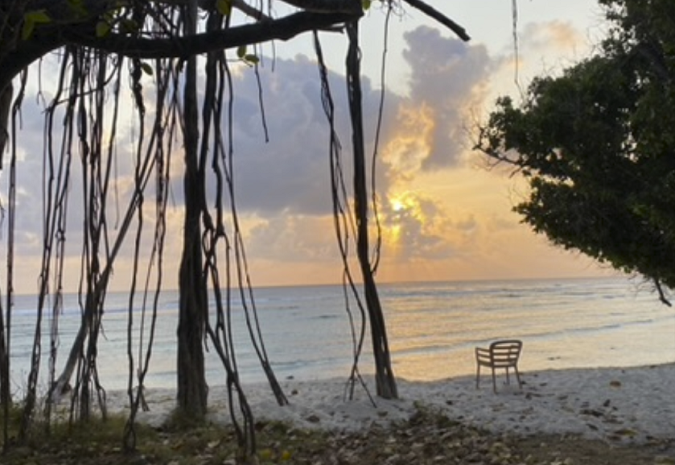 Welcome to Cocos-Keeling Islands, a bit of Australia lost in the Indian Ocean. As I write this, I’m sitting in that chair you see watching a glorious sunset in solitude – and yes, with a very good oversized vodka mango juice tonic. This is an exceedingly funky place with just 600 friendly people. No crime whatever, relaxed and peaceful.
Welcome to Cocos-Keeling Islands, a bit of Australia lost in the Indian Ocean. As I write this, I’m sitting in that chair you see watching a glorious sunset in solitude – and yes, with a very good oversized vodka mango juice tonic. This is an exceedingly funky place with just 600 friendly people. No crime whatever, relaxed and peaceful.
I’ve wanted to come here for years for its fascinating history (see the Wiki link above). So Rebel gave this experience as a birthday present. As you may imagine, though, an internet connection is very intermittent. So I better get to the HFR as quick as I can. Here we go…
CARAVAGGIO’S MEDUSA
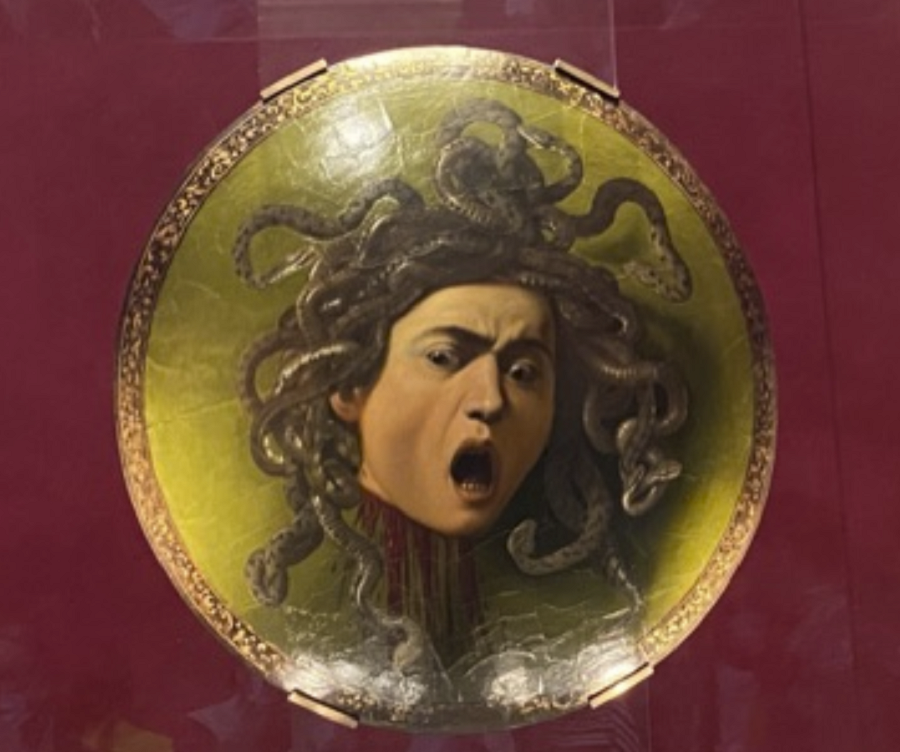 This masterpiece, of Rennaisance painter Caravaggio (1571-1610) was completed in 1597 and hangs in the Uffizi Gallery in Florence where I took this picture. It is a genius portrayal of one of the most legendary Greek myths, the demigod hero Perseus slaying the gorgon monster Medusa. She was thought unconquerable with her head of snakes, for anyone who gazed upon her was turned to stone. Yet Perseus chose to battle her with a shield that was a bronze mirror on the outside. Thus when they fought, she saw herself in the shield’s reflection, turning herself into stone. The painting depicts the moment of horror she realizes what has happened, which Caravaggio painted on a simulated shield.
This masterpiece, of Rennaisance painter Caravaggio (1571-1610) was completed in 1597 and hangs in the Uffizi Gallery in Florence where I took this picture. It is a genius portrayal of one of the most legendary Greek myths, the demigod hero Perseus slaying the gorgon monster Medusa. She was thought unconquerable with her head of snakes, for anyone who gazed upon her was turned to stone. Yet Perseus chose to battle her with a shield that was a bronze mirror on the outside. Thus when they fought, she saw herself in the shield’s reflection, turning herself into stone. The painting depicts the moment of horror she realizes what has happened, which Caravaggio painted on a simulated shield.
A visit to the Uffizi is an absolute must should you ever visit Florence. (Glimpses of Our Breathtaking World #279 photo ©Jack Wheeler)
A FATHER IN CHAD
 This is the most anti-Marxist picture I have ever taken. I am a White American. He is a Black African in N’Djamena, Chad. And those differences mean nothing compared to our both being fathers.
This is the most anti-Marxist picture I have ever taken. I am a White American. He is a Black African in N’Djamena, Chad. And those differences mean nothing compared to our both being fathers.
Look into his soul through his eyes. Look at the tranquility and peaceful joy his soul feels in being the father of his two beautiful children. It is the same with me.
The Left’s purpose is to divide us into tribal differences of hate – white vs. “people of color,” rich vs. poor, employers vs. workers, exploiters vs. exploited, victimizers vs. victims, the anti-white racist hate of Critical Race Theory. Always, always, they focus exclusively on differences, to separate people apart, to hate other different than them. All in the ancient “divide and conquer” scheme to control people’s lives.
Yet the differences between us are so unimportant compared to what we all have in common, our basic humanity. The bond that I have with this man from Chad is so much greater than anything that separates us. Focusing on what we all have in common with our fellow human beings is the way to rid the world of the anti-human hate of the Marxist Left. (Glimpses of Our Breathtaking World #157, photo ©Jack Wheeler)
THE PARADISE OF ZIHUATANEJO
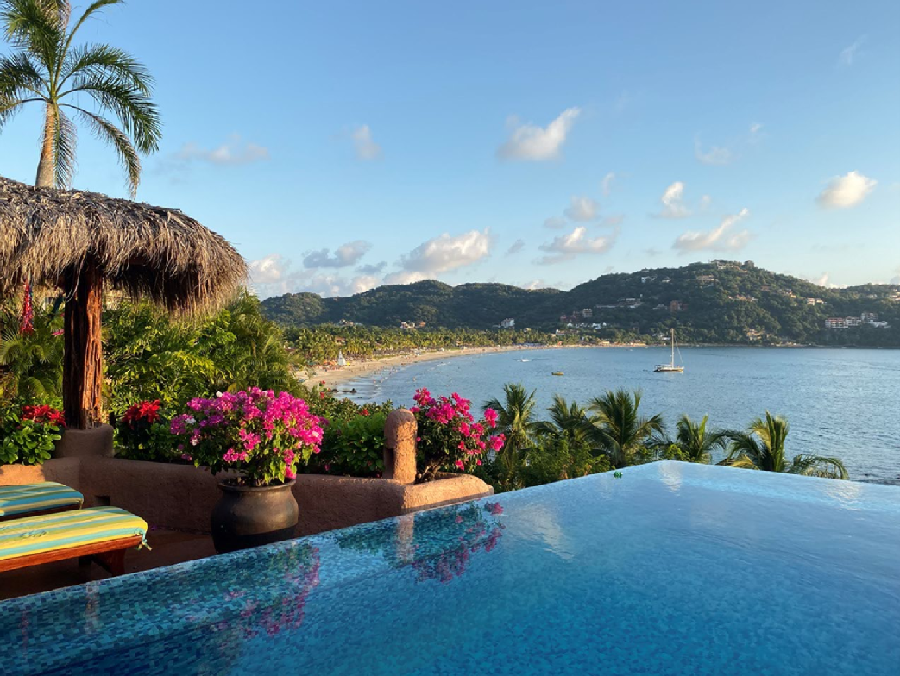 Once a small Mexican fishing village far from everything, Zihuatanejo (zee-wah-tan-ay-ho) – Zee-wat to locals – has become a paradisical escape hatch for many seeking refuge from our pressure-cooker world. 150 miles up the northwest coast of Acapulco, Zee-wat is its own world of peace and serenity.
Once a small Mexican fishing village far from everything, Zihuatanejo (zee-wah-tan-ay-ho) – Zee-wat to locals – has become a paradisical escape hatch for many seeking refuge from our pressure-cooker world. 150 miles up the northwest coast of Acapulco, Zee-wat is its own world of peace and serenity.
Stroll on the beach or along the Paseo del Pescador (Fisherman’s Path) with its shops, bars, and restaurants unbothered. Just relax surrounded by flowers, warm water, and blue sky. All the worries elsewhere in Mexico, much less in the US or anywhere else are not here.
The time to come is now, the dry season November-May. Prices are a bargain with the dollar way up on the peso. Non-stop flights from multiple cities in the US and Canada. Just a few days here will do wonders for your soul. (Glimpses of Our Breathtaking World #182 photo ©Jack Wheeler)

